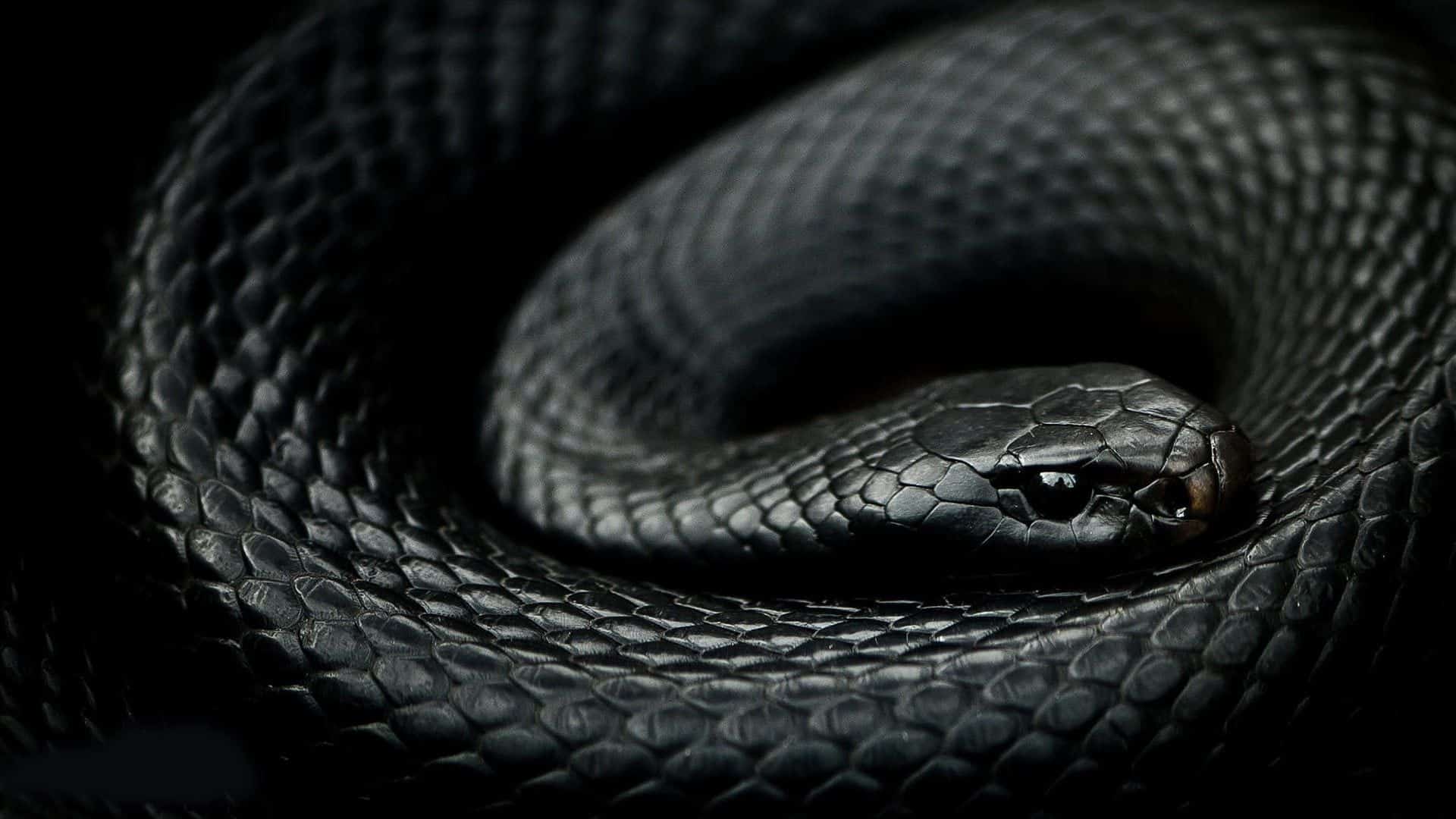When you think of dangerous animals, you’ll often think about snakes. Whether or not you believe the religious version of how they came to be or if you believe the evolutionary way…most are still incredibly dangerous. There are some that do not want to attack people, while others just need a reason and will strike at anything. Venomous Snakes are everywhere, and you should be aware of where they are and how to avoid them. We wanted to develop a list that could provide you, the reader, with a guide on the most venomous of the world’s snakes that still live today. Our plan is to discuss the venom they possess, where the snake species tends to be, and the environment they tend to frequent the most.
This will involve snakes you might see randomly in the forest, the sea, or in a tree. Of course, others might be in the desert roaming around in the sand. Others might even be right outside your door. In some parts of the world, snakes could be hiding underneath your car. Meanwhile, some might be in your basement or underneath your bed (this writer experienced the latter once). Everywhere you look, snakes are potentially going to be there. It is kind of creepy to realize this, especially knowing one strike from certain snakes could kill a grown human quickly. With that said, let’s dive into our article on the most venomous snakes on the planet today!
***Note: All venom potency mostly based on average Intravenus milligrams per bite.***
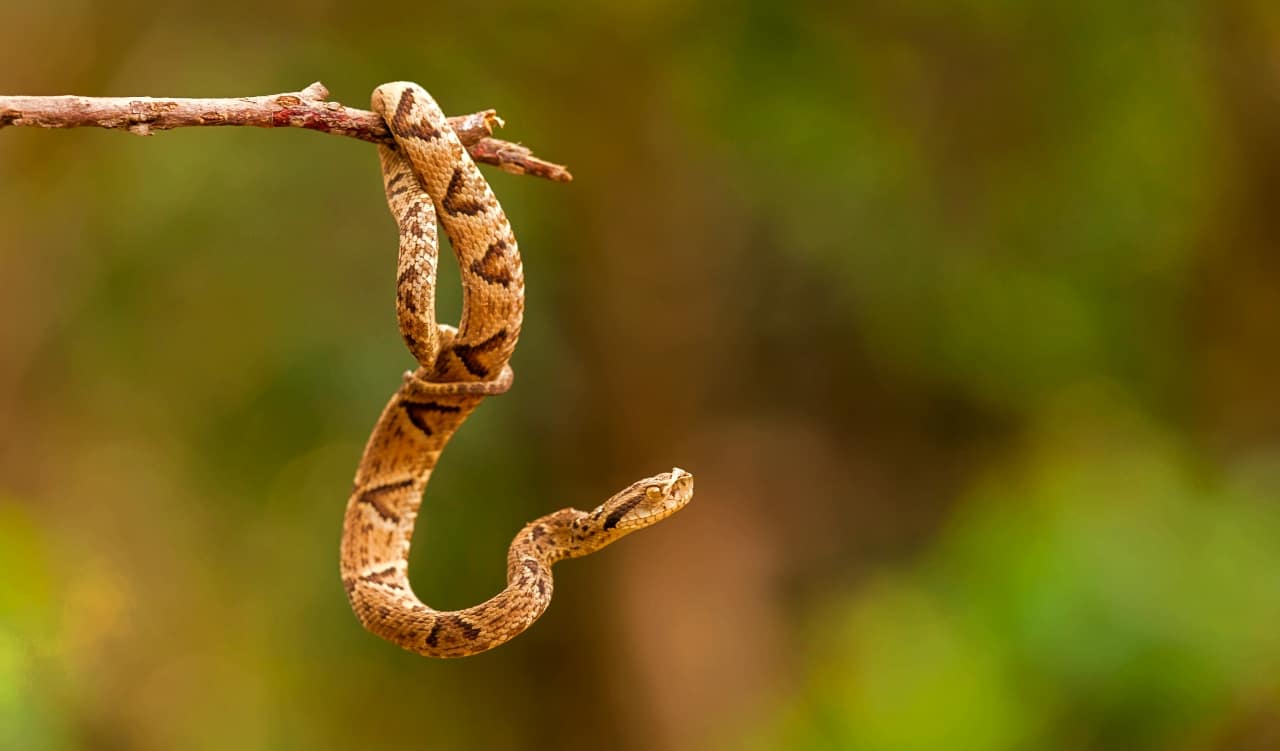
Jararaca: The Snake That Keeps South Americans Up At Night
- Venom: Hemotoxin
- Its Potency: Averages 25-26 Milligram Yield Up To 300 milligrams Of Dried Venom
- Average Fatality Rate Annually: 0.7% Rate At The Highest
The South American Jararaca snake is a terror for people, especially Brazilians. This is one of the most venomous snakes around and is capable of killing people. Luckily, there is an antivenom that will help people if they are treated quickly enough. To know if you’re in harm’s way, there are a few things to keep in mind. First, you’ll get some pretty bad swelling, then bruise and blister, bringing some terrible pain to the affected area.
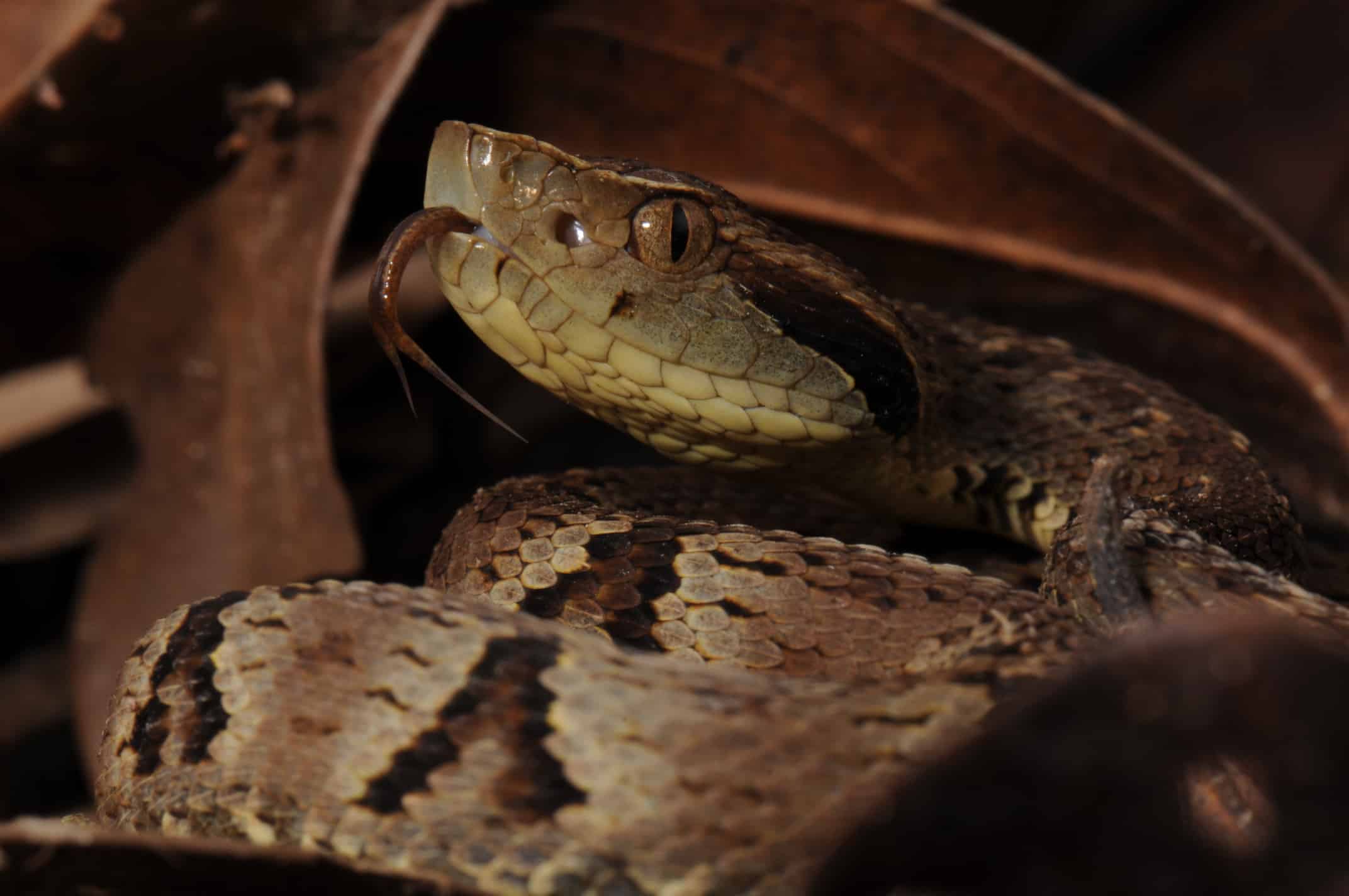
The big thing to worry about is what the venom does. It’s a Hemotoxin, which will make your blood platelets no longer be capable of doing their job. They clot your blood, keeping you from bleeding if cut. Once the Jararaca snake’s venom has taken hold, it’ll cause bleeding in your gums, the skin, a subconjunctival hemorrhage, and of course incoagulable blood. Once it has gone further, it’ll cause potential shock and kidney failure, where death is sure to follow.
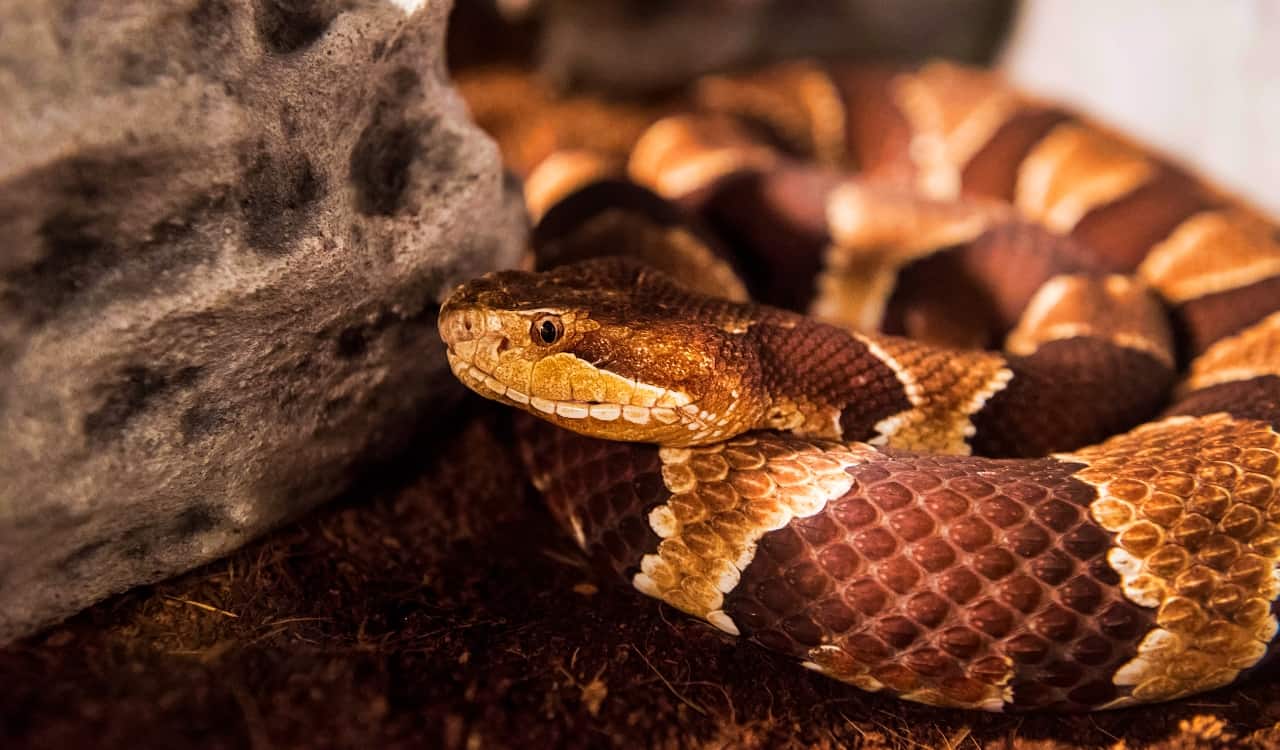
Eastern Copperhead: The Accidental Terrorizer
- Venom: Hemotoxic
- Its Potency: 0.100mg On Average
- Average Fatality Rate Annually: Less Than 0.05%
Eastern Copperhead snakes are often just called Copperheads. However, you’ll want to keep the “Eastern” part in mind. There are several Copperheads, many of which are not poisonous yet this is one of the most venomous snakes known to man. While not usually aggressive, Copperheads will bite humans. They actually freeze, then strike. Whereas other snakes tend to slither away. Most are in the Southern United States, usually in wooden environments. Causing many to happen across them.
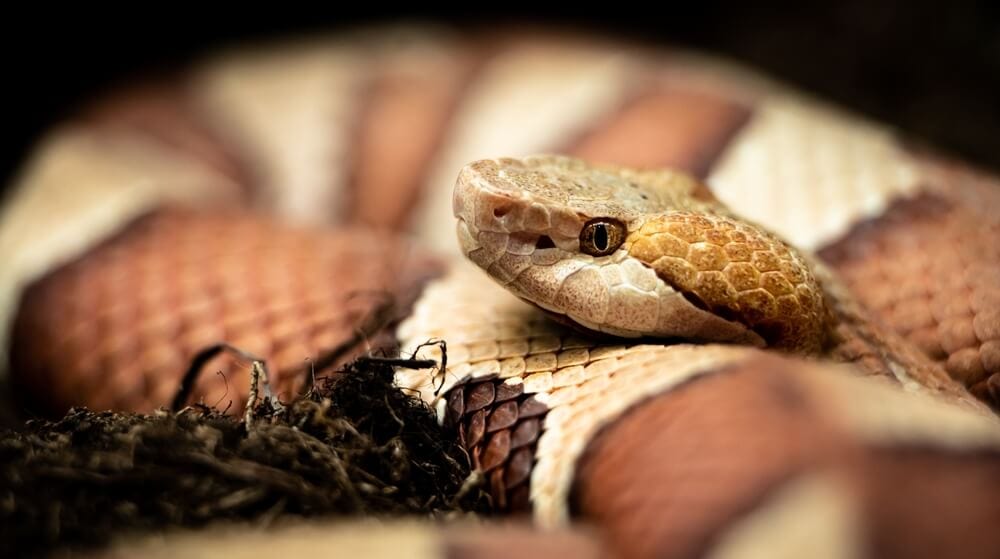
This is why they are responsible for the most bites of any snake in the United States every year on average. Luckily, their venom doesn’t kill quickly. While it is a hemotoxic venom, it takes much longer to affect the adult human body. If you’re otherwise healthy nor elderly or very young, you should be okay. As long as you get to an emergency room ASAP. They can still kill within a 12-hour period.
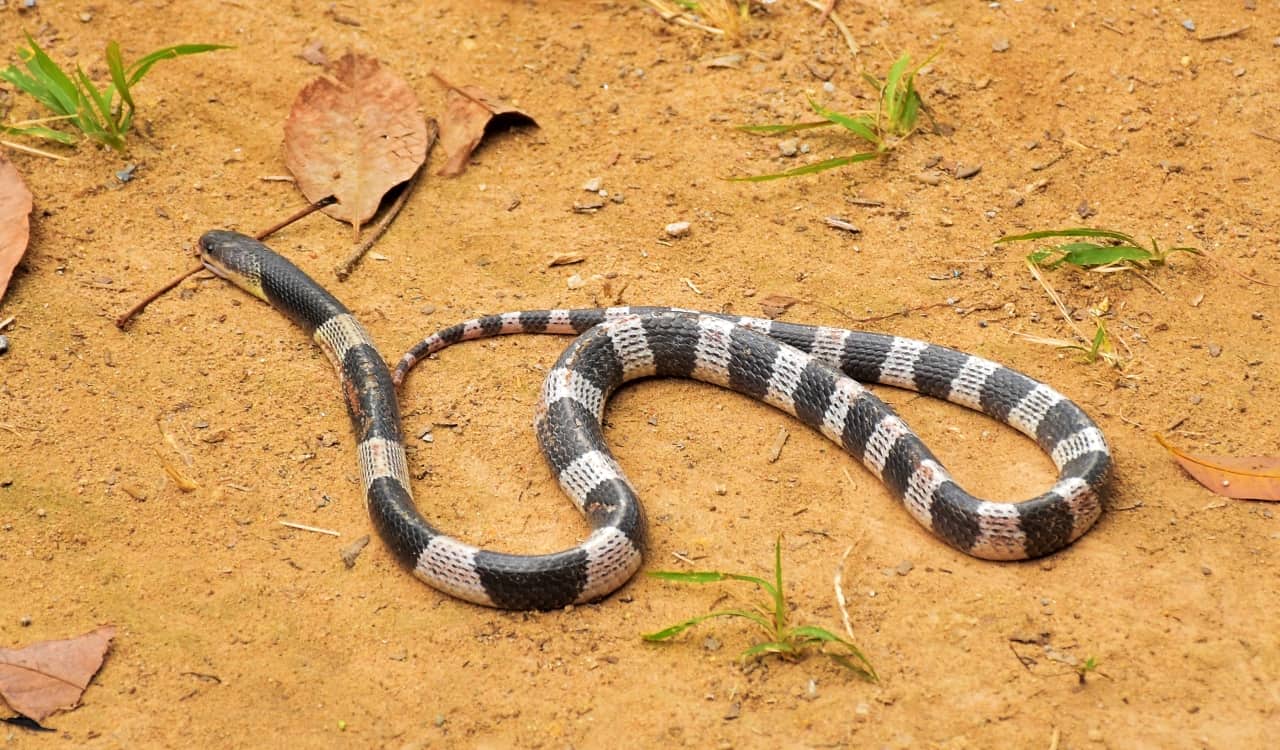
Malayan Krait: You’ll See Both Blue & Red Before You Die
- Venom: Non-neurotoxic, Myotoxicity, Nephrotoxicity
- Its Potency: LD-50 Dose Potential
- Average Fatality Rate Annually: 60-70% Death Rate From Untreated Wounds (Less Than 10 People Annually)
The Malayan Krait, often been referred to as the Blue Krait, is incredibly dangerous. Some do not have crossbands and come completely white, which causes them to be confused with other snakes. However, they are the same, and usually those local to Karawang, West & Central Java, as well as Indonesia will know of them and how to best avoid the species.
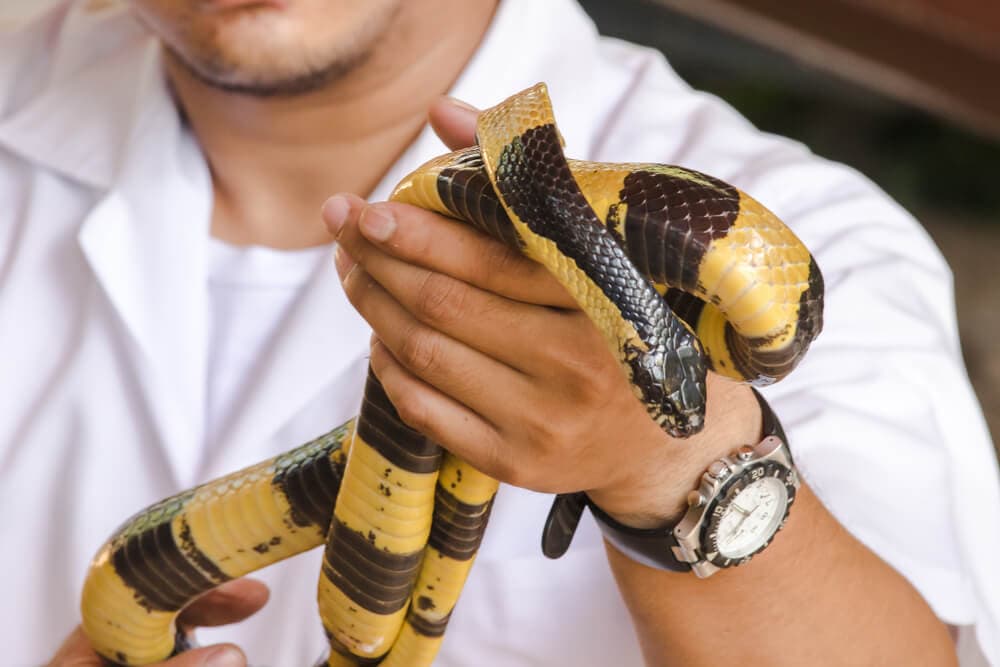
Their bite is incredibly venomous and non-neurotoxic. This venom affects you differently compared to a Neurotoxin. It can help reverse neurotoxin issues but when there is none in place, it tends to affect you by generally going after organs. The venom is accompanied by Nephrotoxicity…which affects the kidneys and liver. Along with that, you’ll deal with Myotoxicity. This mostly results in paralysis either at the site of the bite or throughout the body.
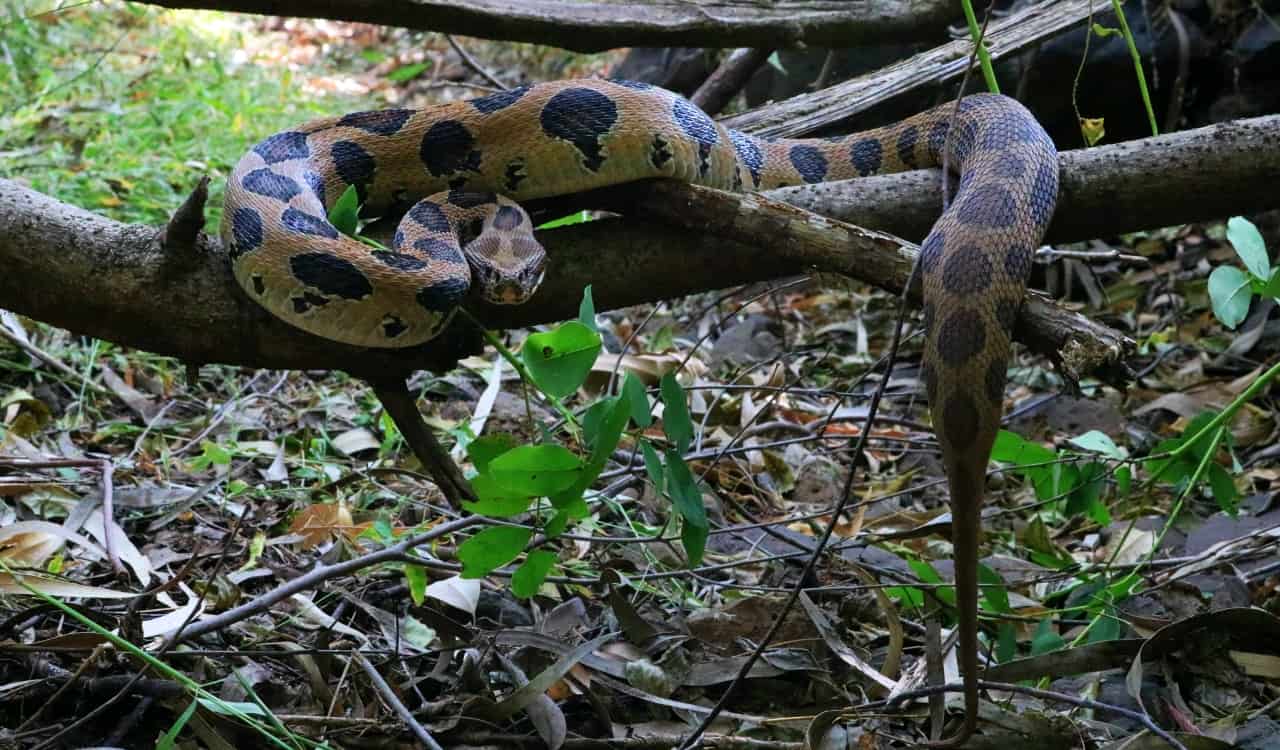
Russell’s Viper: Bites More People In Asia Than Any Other Snake
- Venom: Hemotoxin, Neurotoxin, Myotoxin
- Its Potency: Between 0.50 to 0.133mg
- Average Fatality Rate Annually: Thousands Each Year
Russell’s Viper snakes are one of the most aggressive snakes on our list. The weird part is that they tend to put themselves into weird places where humans frequent, such as random garages, baskets, or simply a public area. This is unique and puts most venomous snakes in the world right by humans. This Viper is usually only found in India but you might see it pop up in pockets near the nation. Due to the population being over 1 billion here, these snakes do not have a lot of places to go.
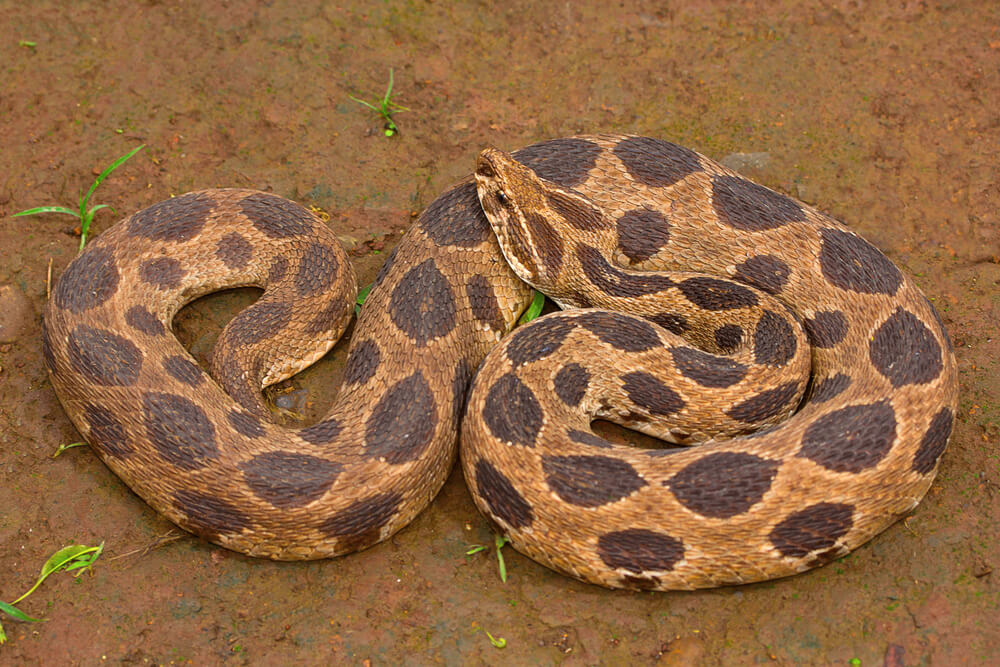
Sadly, they account for the most snakebites in all of Asia in spite of being in just one country mostly. Their venom is incredibly effective and will kill within 2 to 4 hours, depending on the person. It is a mix of Neurotoxin, Hemotoxin, and Myotoxin. Ultimately, you will bleed from everywhere and eventually be unable to move, with your organs slowly shutting down. Even if you survive, the pain from the bite lasts for weeks and you could have severe nerve or organ damage.
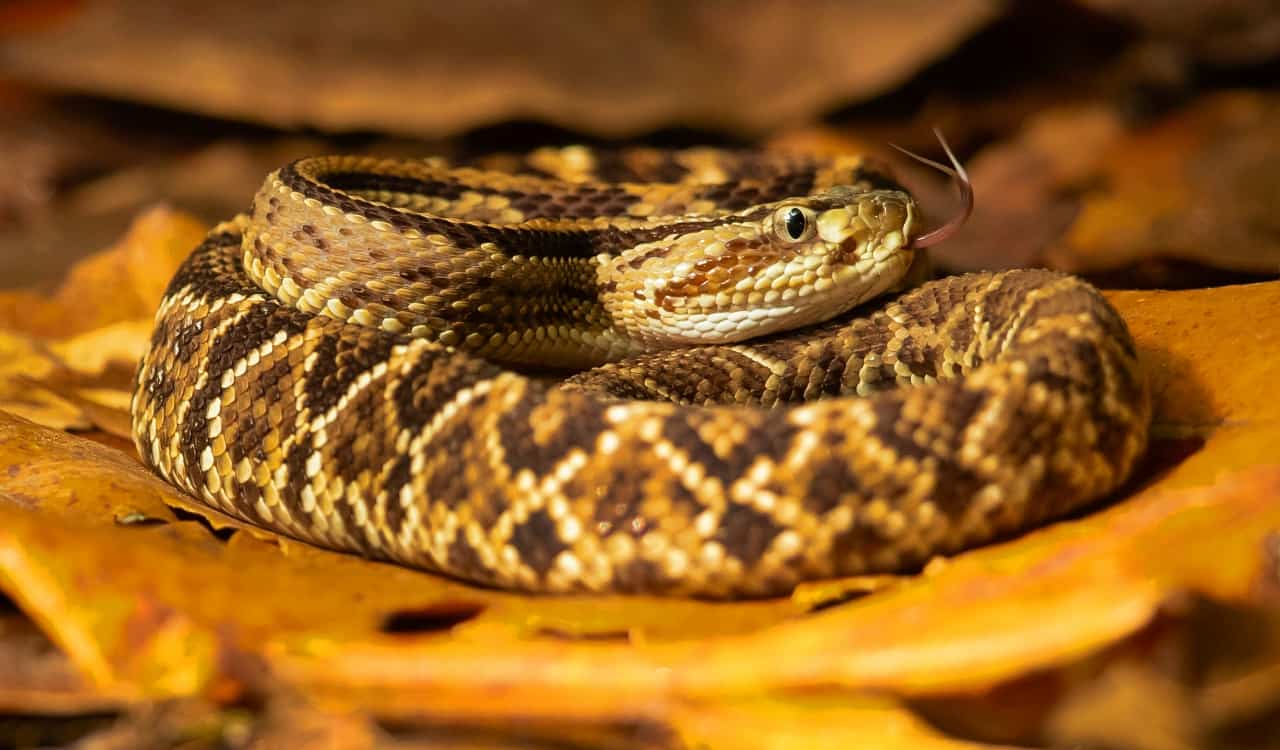
Cascavel: South America’s Unsung Killer
- Venom: Neurotoxin
- Its Potency: 0.171 to 0.193mg
- Average Fatality Rate Annually: Fewer Than 10
Also known as the South American Rattlesnake, the Cascavel Snake is incredibly dangerous. While most of South America has had some version of one, they tend to like Paraguay and Venezuela the most among all SA nations. Their venom is a mix of different Neurotoxins, specifically crotoxin & crotamine. This affects all your senses first, such as hearing and sight. Then progressively reaches paralysis throughout the body.
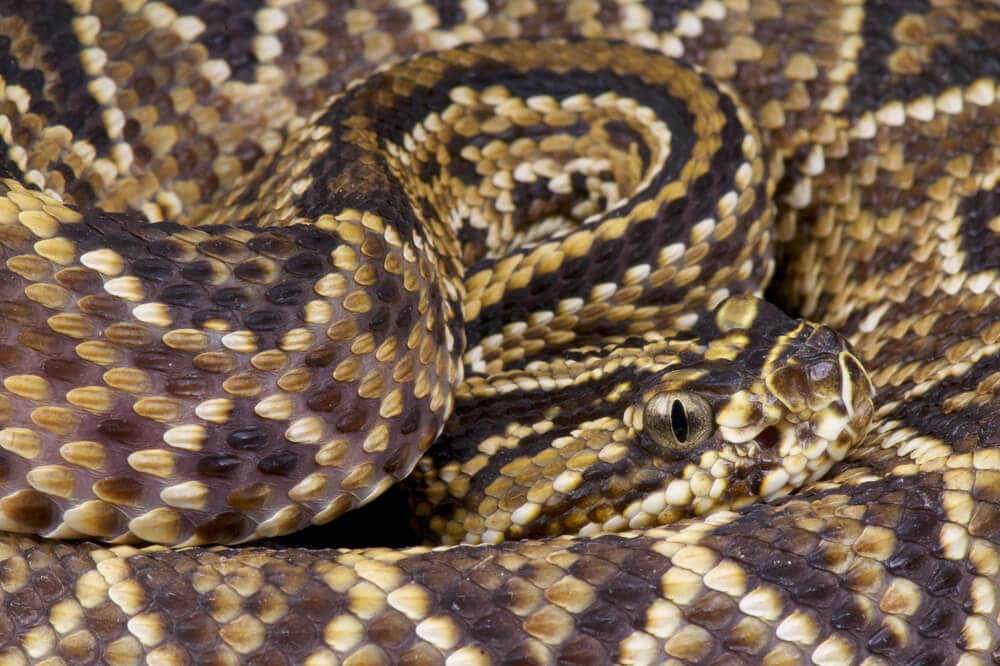
Respiratory paralysis is the most dangerous and life-threatening side effect. Even if you’re saved, sometimes blindness is permanent. Weirdly, they kill most people by causing renal failure, which usually will not happen unless the person has not been treated for the bite within 24 hours. Without antivenom, the death rate for being bitten by this snake is 72% but with it, people died only 11% of the time. The latter number was usually due to people waiting too long to be seen.

Black Desert Cobra: The Dry Bite Kings
- Venom: Neurotoxin
- Its Potency: 0.4mg
- Average Fatality Rate Annually: Unknown
The Black Desert Cobra is a curious snake. It is not exactly known for being aggressive, but it will also strike at anything it considers to be a threat. They like to slither away quickly from humans. That results in a very low bite count annually, causing the death rate for this snake to be lower. On top of this, in spite of having more powerful venom than the infamous Indian Cobra, the Black Desert Cobra is very conservative with how it uses it.
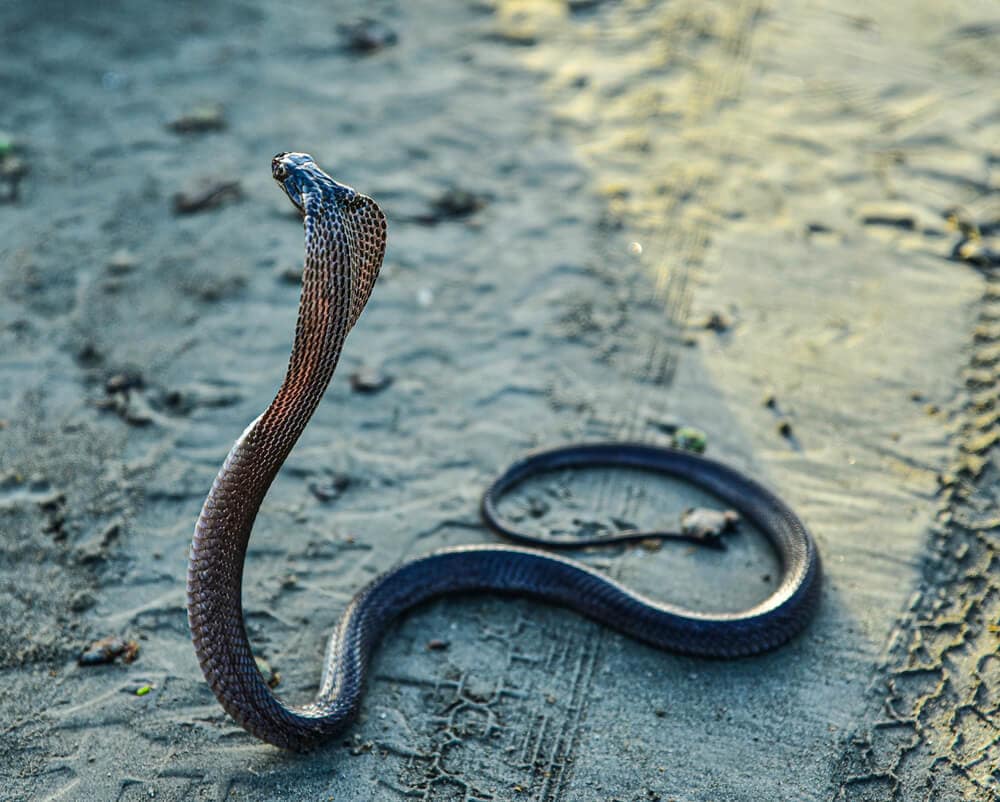
Even with the animals they hunt, they do not always drop venom in to kill them. As a result, most bites for humans have been dry rather than venomous. Especially in cases where they were not threatened but simply startled by a human being. It’s almost like a warning of sorts. Yet if they do land a shot filled with venom, you won’t last very long. Their Neurotoxin can kill in less than 6 hours.
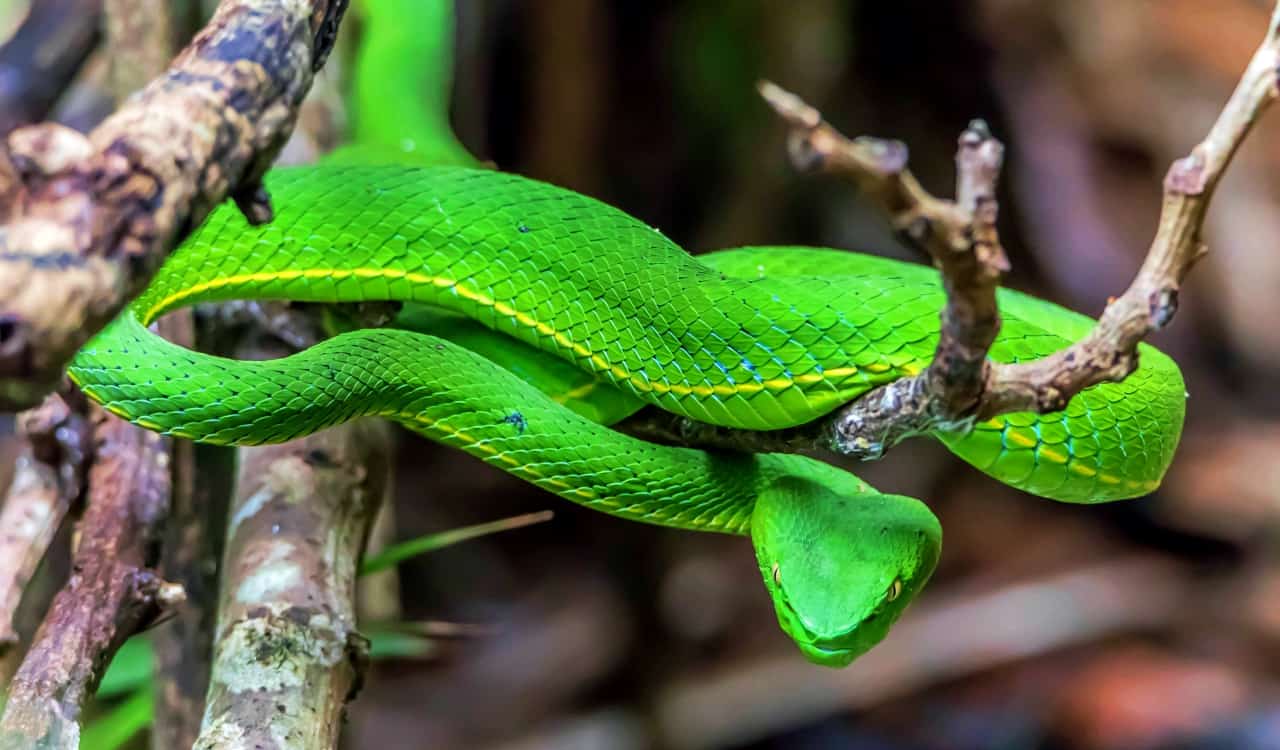
Eastern Green Mamba: Can Kill A Grown Adult In Just 30 Minutes
- Venom: Neurotoxin
- Its Potency: 0.45mg Average
- Average Fatality Rate Annually: 10 Venomous Bites Attributed, No Confirmed Deaths (Between 1957-1979)
The Eastern Green Mamba is the most encountered of the Green Mamba species, yet it does not go toward people and actively avoids them. As a result, the bite count is pretty low for this one. There are only 17 bites attributed to the Eastern Green Mamba, and just 10 of them were venomous. There have not been a lot of active recordings of bites since 1979, but other bites have since occurred.

It is believed the Mamba species has since killed a few people, but it was said to have been agitated enough to do so. In all the deaths from this Mamba species, the result was usually rapid fatalities. Reports claim that deaths happened to full-grown adults in just 30 minutes. This is potentially due to the Eastern Green biting multiple times when it actually does bite someone, meaning they have to feel pretty threatened to act with such aggression.
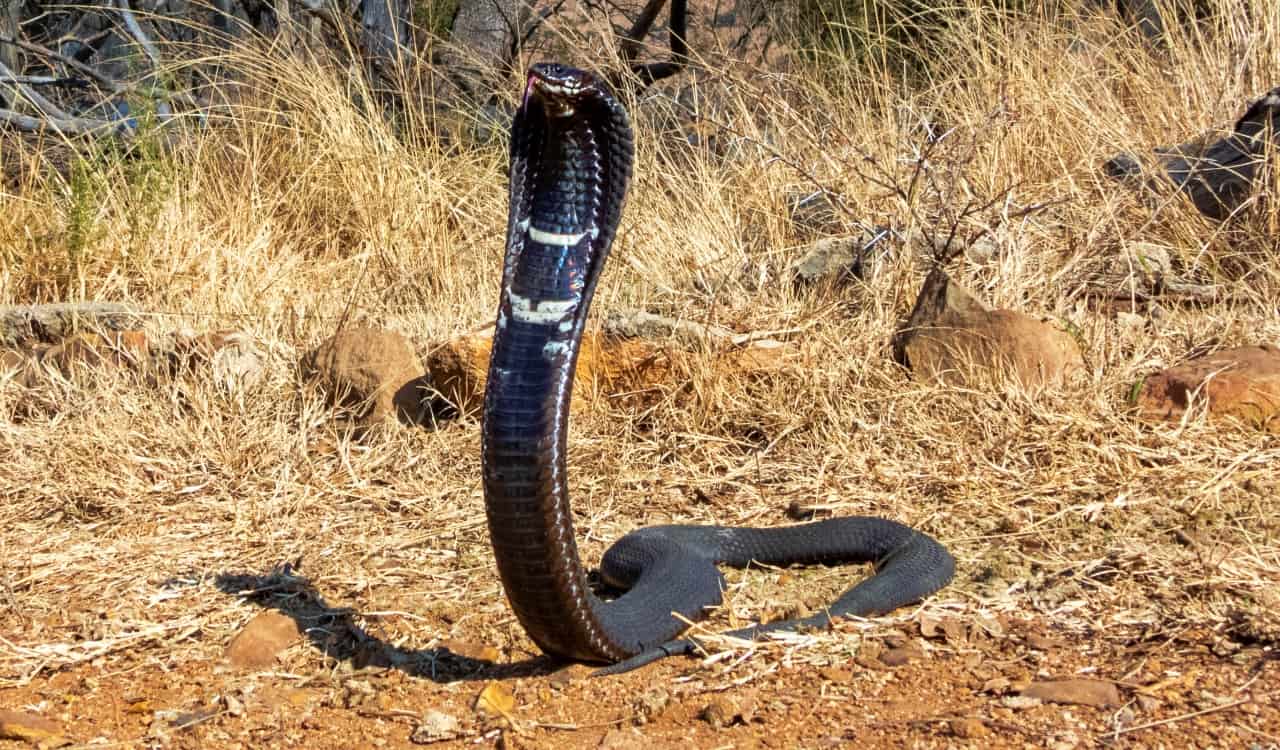
Rinkhals Snake: The Cobra That Isn’t Actually A Cobra
- Venom: Neurotoxin, Cytotoxin
- Its Potency: More Study Needed On Snake
- Average Fatality Rate Annually: Deaths Thought To Be Rare
The Rinkhals Snake has very close similarities to a regular cobra, but they’re actually not cobras. They have a small hood that makes them look similar to younger cobras, but they differ especially in terms of how their scales appear. Unlike cobras, Rinkhals have ridged-like scales. Also unlike cobras, they tend to be capable of laying around 25 to 30 eggs at a time. Yet it was reported a while back that one female Rinkhal laid a crazy 65 during one birth!
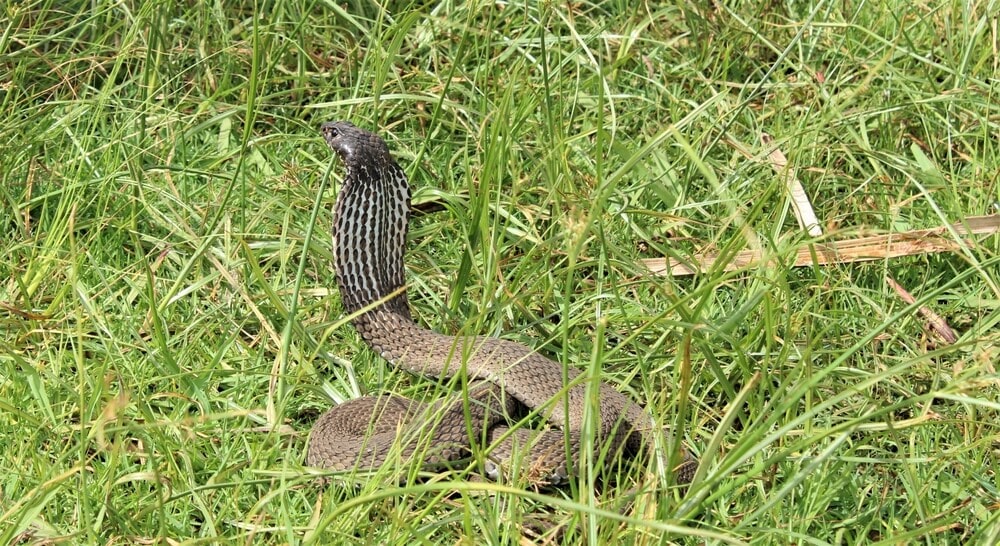
Another very distinct part of this snake is that it will actually fake its own death to keep predators away or surprise attack them, rolling onto its back with its mouth open. On top of all of that, this is labeled as a “Spitting Cobra” as it spits venom. This venom is Neurotoxic and cytotoxic. The spitting venom only occurs for defensive purposes, and unlike other snakes that spit venom…Rinkhals actually lunge forward when doing it. They can even spray their venom a little over 8 feet too!
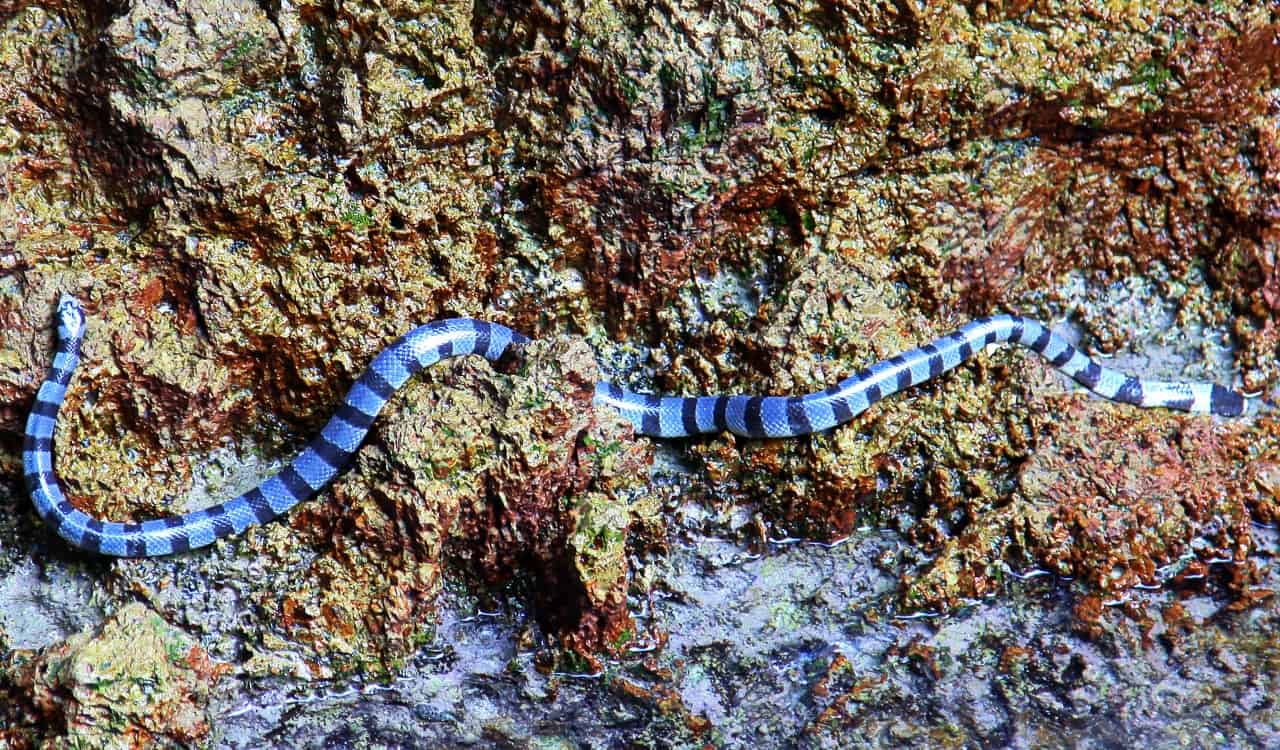
Belcher’s Sea Snake: The Sea Snake That Has Venom We Still Don’t Fully Understand
- Venom: A Version Of Neurotoxin (Possibly)
- Its Potency: 0.24mg Intramuscular Measurement
- Average Fatality Rate Annually: Deaths Rare
The Faint-Banded Sea Snake, better known as Belcher’s Sea Snake, happens to be one of the most venomous snakes on the planet yet one we still do not fully understand. Fishermen tend to be bitten the most, especially as they get their nets out of the water. It is said that those who are bitten tend to experience a lot of the same symptoms of a neurotoxin. When the venom was studied in mice, it was tested intramuscularly with venom measurement reaching 0.24mg.
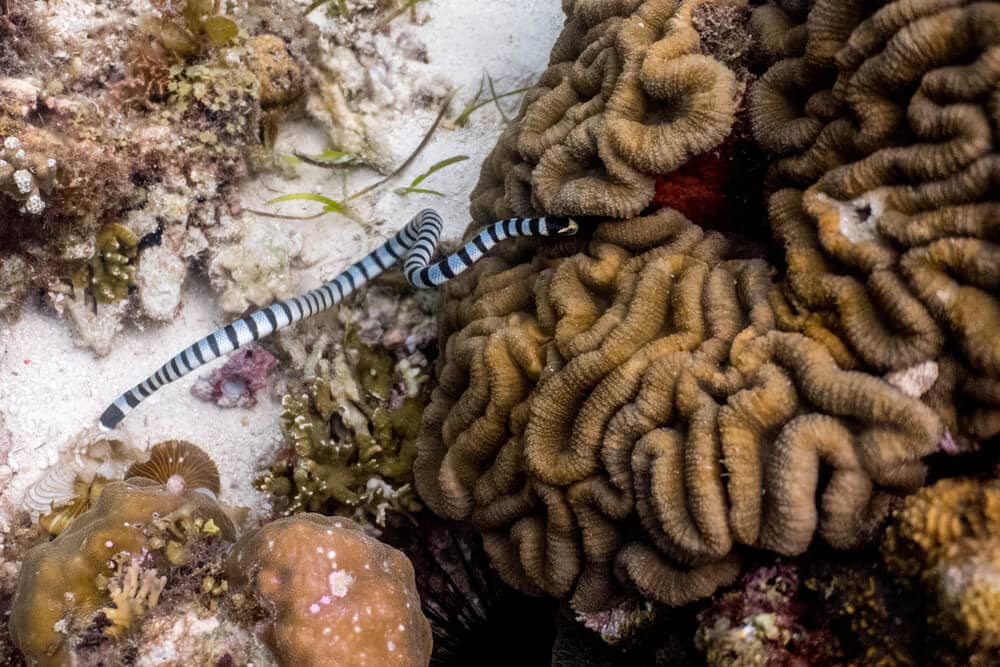
This is considered to be pretty venomous, enough to be given an LD50 rating. As a bit of trivia, the name of the snake comes from John Edward Grey who named the snake after Sir Edward Belcher in 1849, after Belcher was the first to discover the snake. While it has been referred to by its scientific name or the often defined name, most snake experts have been fine calling it by the Belcher’s Sea Snake name too.
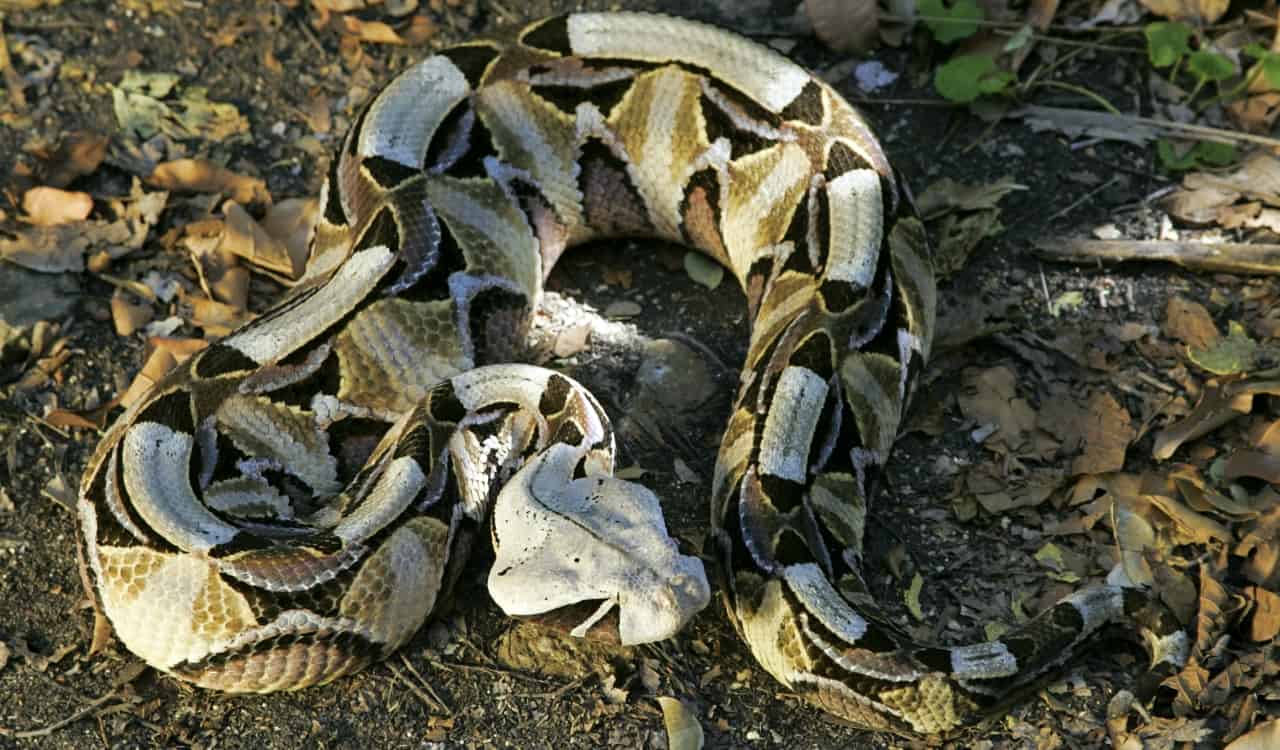
Gaboon Viper: Second-Most Venom Yield Of Any Snake On The Planet
- Venom: Cytotoxin
- Its Potency: 0.8 to 5.0mg
- Average Fatality Rate Annually: Deaths Are Rare
The Gaboon Viper is mostly only found in the different parts of Africa, which limits how many snakebites it can have on humans each year. However, this species is known for being lazy and sluggish and truly not very aggressive. Most every single time a bite happens, it is due to a human stepping on one. When it bites, it is known for a few unique features. First, it has incredibly long fangs at up to 2 inches. This is said to be among the longest of any snake species.
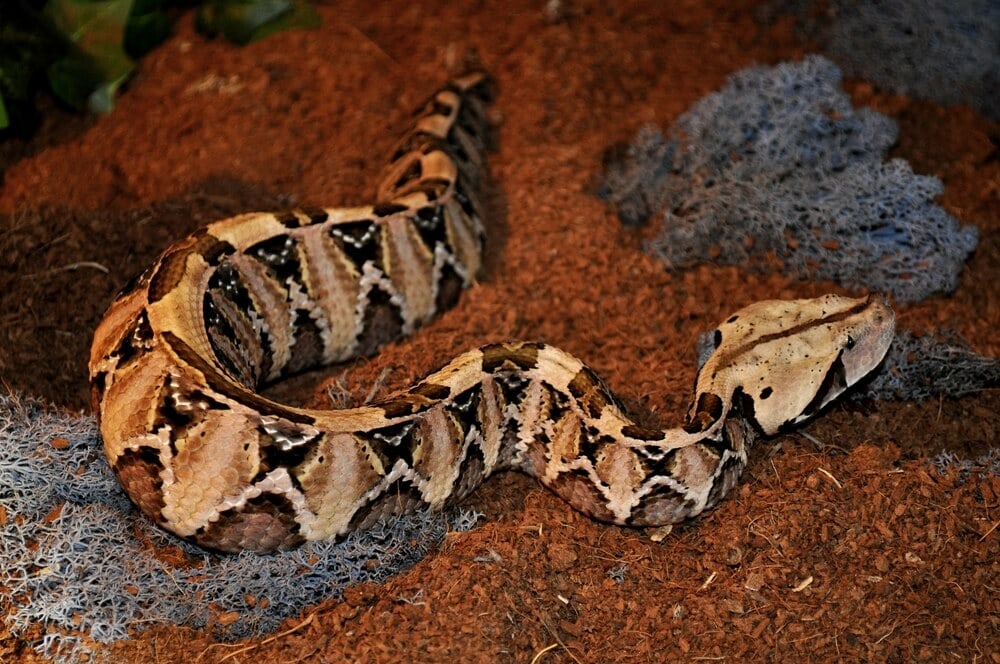
They also tend to have a higher yield of venom when they bite, as they do not just strike and move away like most. They tend to hold on and therefore release far more venom per bite. Up to 450 to 600mg of venom can be released in a single bite. Unlike some snakes that have a lower potency after repeated strikes, studies show that the Gaboon Viper keeps a consistent yield and potency strength. Their venom is a Cytotoxin, which is incredibly deadly for humans.
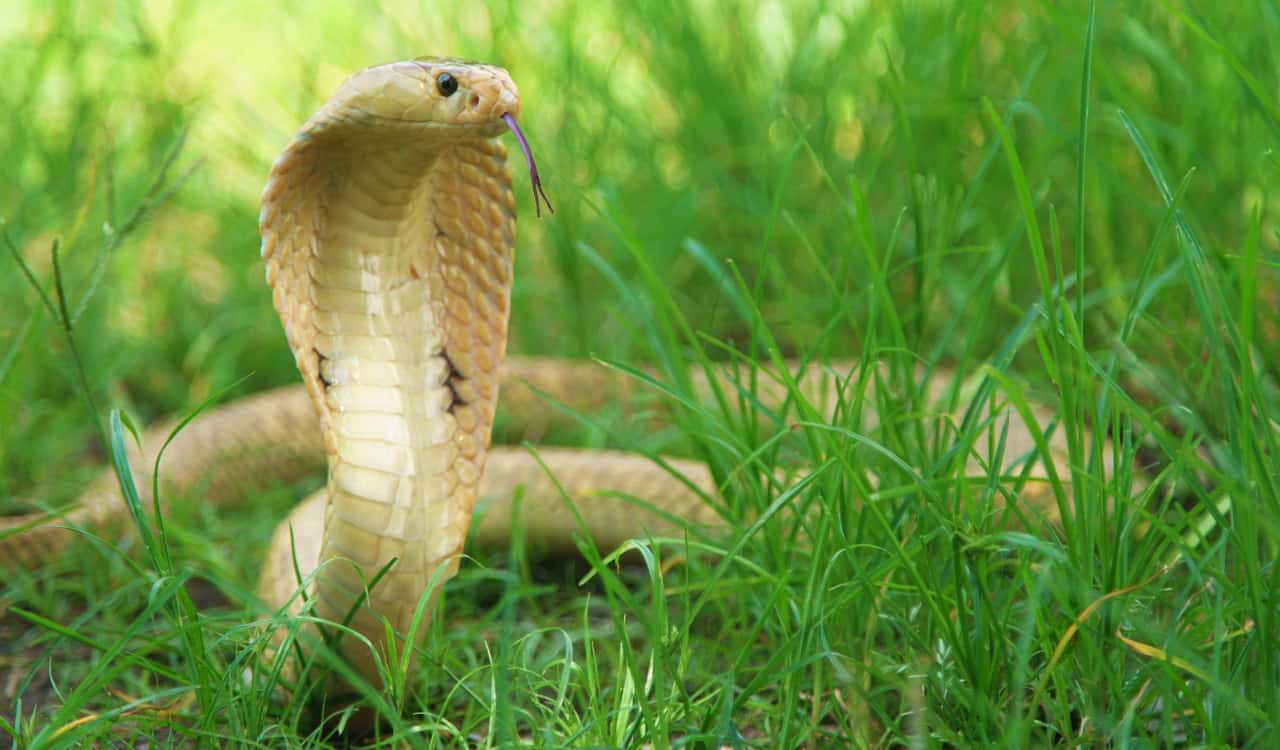
Cape Cobra: The Snake Right Outside South African’s Door
- Venom: Neurotoxin & Cardiotoxin
- Its Potency: 0.4 to 0.6mg
- Average Fatality Rate Annually: Deaths Rare Due To Antivenom
Like many other Cobras, the Cape Cobra is known for being incredibly dangerous and loves to hunt in broad daylight. Quite unique among most snake species. This is likely why they are common snakes to see around houses. Of course, they are located in the well-populated South African region. These people should always watch out for this cobra. Their venom is a powerful mix of Neurotoxin & Cardiotoxin, which attacks the central nervous system & respiratory system.
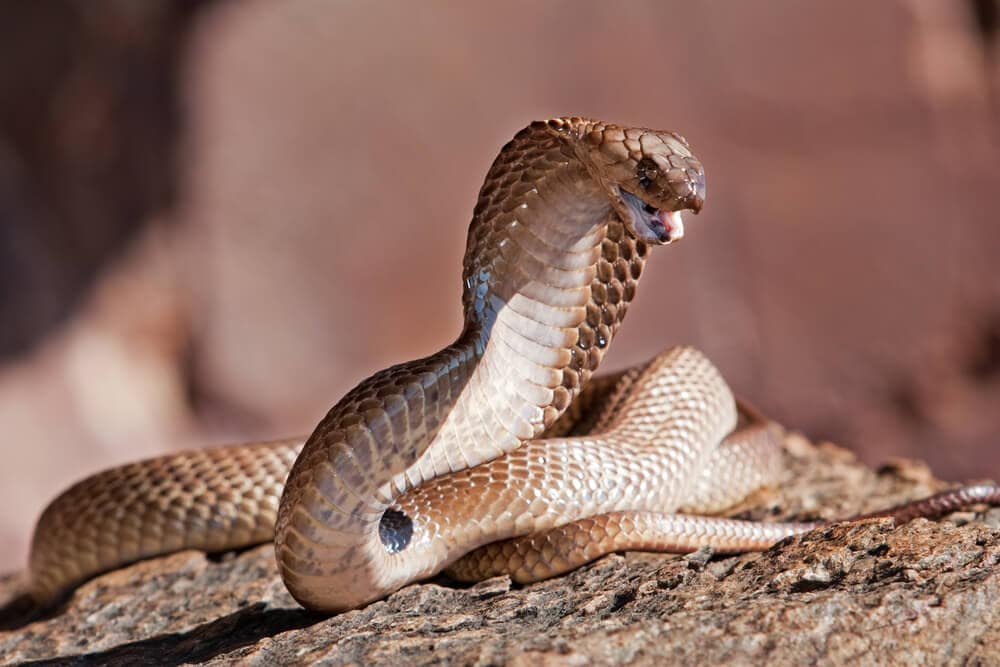
The death period upon being bitten varies wildly between 1 to 10 hours, as it likely depends on the person. Of course, it could also have to do with multiple bites too. Most death is generally caused by respiratory failure or complete paralysis. A lot of the issues can be reversed with proper treatment. Yet some have to remain in the hospital for several weeks to several months, depending on how severe the venom affects the person’s system.
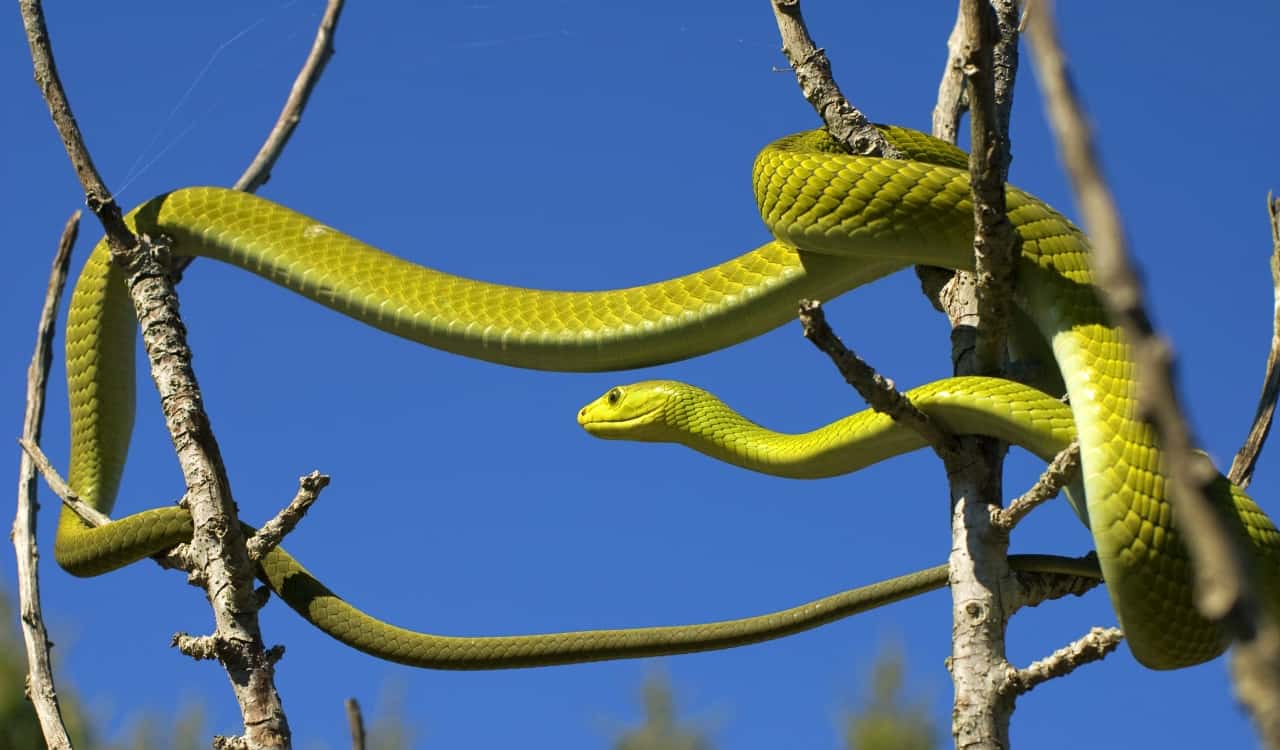
Jameson’s Mamba: The Tree Hopping Killer From The Sky
- Venom: Neurotoxin, Cardiotoxin, Hemotoxin, & Myotoxin
- Its Potency: 0.8mg
- Average Fatality Rate Annually: Deaths Rare (due to lack of human interaction)
Mostly found in the Central African region, the Jameson’s Mamba is a large mamba snake that will often hang around in treelines. Therefore, you’d have to be looking for it to see one. They actually like moving from tree to tree rather than slither on the ground. While rare, when they do come in contact with humans they’ll usually try to escape first but if they feel defensive, they’ll flatten their neck a bit to come across as a cobra.
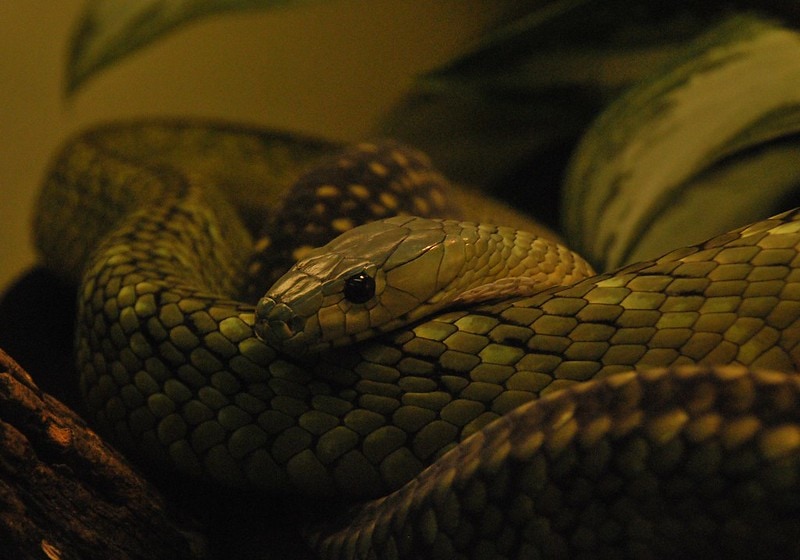
Yet they do not need to, as this is one of the most venomous snakes on the planet. A single bite can yield up to 120mg of venom, and they tend to bite more than once. The venom is capable of killing an adult within 30 to 120 minutes flat but it often takes 3 to 4 hours on average to kill a healthy adult. Getting an antivenom as soon as possible will save people, but if it is not given within this time period…which is why the survival rate is incredibly rare.
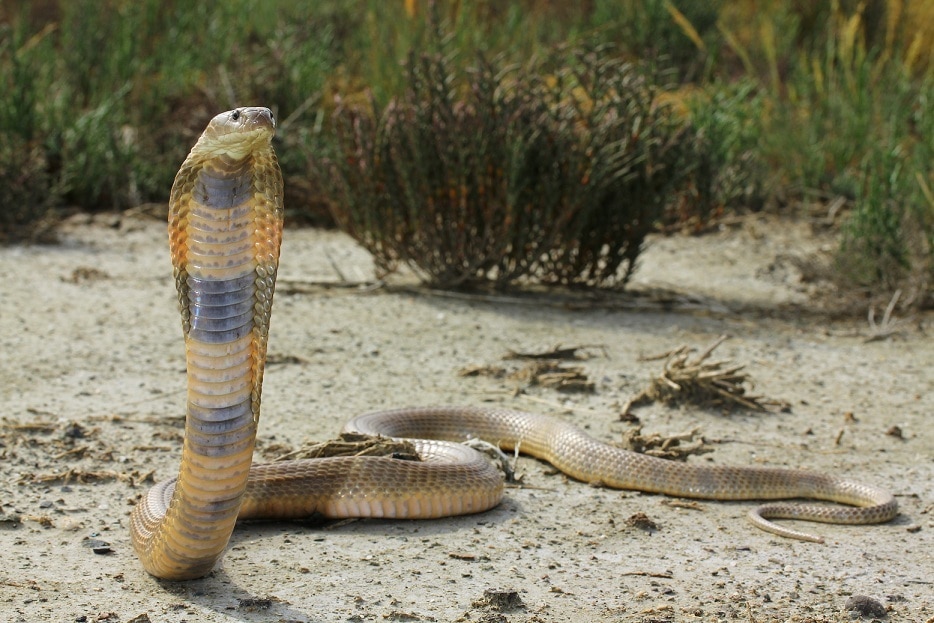
Caspian Cobra: The Most Venomous Cobra On The Planet
- Venom: Neurotoxin, Cardiotoxin
- Its Potency: 0.04 to 0.21mg
- Average Fatality Rate Annually: Deaths Rare Due To Antivenom
While it is not the most famous cobra, the venom in the Caspian Cobra is the most venomous of all the cobra species. This snake is generally bad-tempered and quite aggressive, even for cobra. They are also exclusively found in Central Asia, making their encounters with humans relatively rare but they do happen from time to time. A bite from this snake is usually fatal with around 75% of all bitten dying. This is actually the highest of all cobras too!
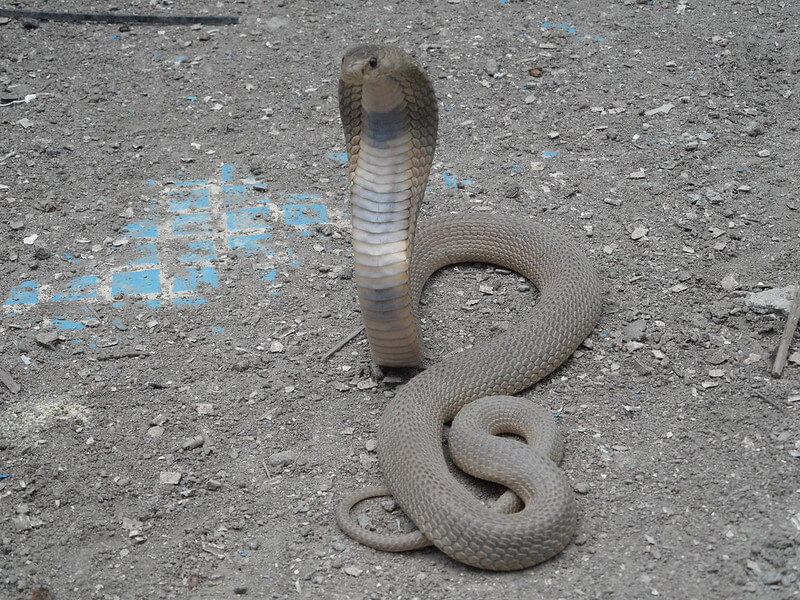
They inject 75 to 125mg of venom with a single bite, but they have gone up to 590mg before. This is bad enough, but you have to add in that the toxicity is incredibly strong on its own. That could be why it is known to be capable of killing in less than a few hours. Usually, doctors say to wait no more than 30 minutes as the time to start worrying about long-term damage or death is the 50-minute mark.
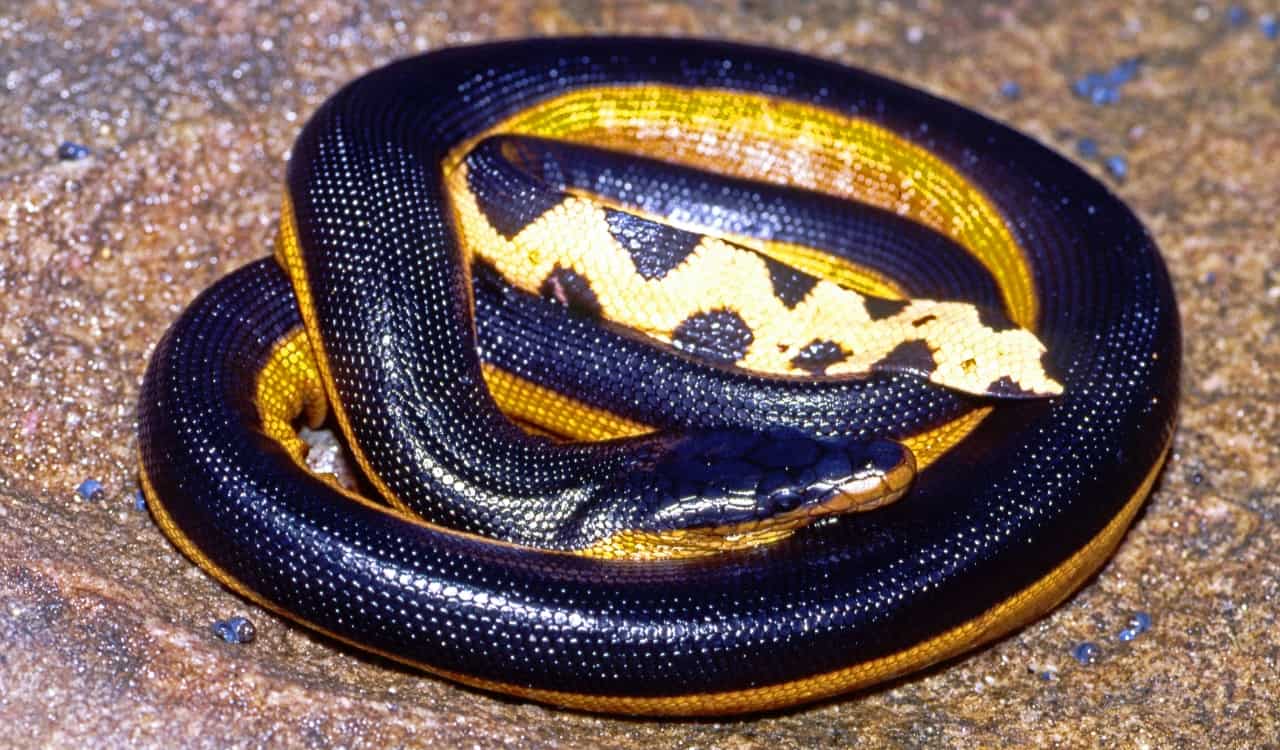
Yellow-Bellied Sea Snake: The Beautiful Nightmare
- Venom: Neurotoxin & Isotoxins
- Its Potency: 0.067mg
- Average Fatality Rate Annually: Deaths Are Rare
The creepiest thing about the Yellow-Bellied Sea Snake is that you can likely see them near most shores of the ocean, especially near shorelines. They tend to prefer warmer waters, which is why they move around a lot. Treat it like how birds fly south for the winter. They have no issue feeding on several smaller species in the waters they reside in. This tends to be a place humans frequent too, making human interaction more common than we’d all prefer.
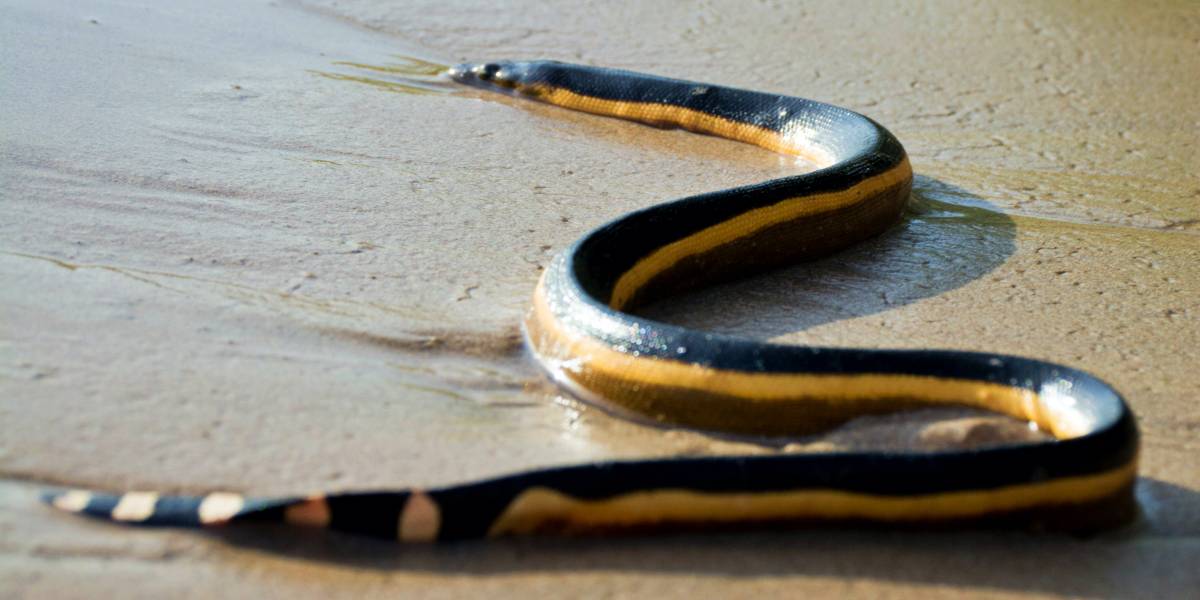
The Yellow-Bellied Sea Snake might be one of the most venomous snakes on the planet…yet they still have a low death count. However, if you do not get treatment, the Neurotoxin & Isotoxins in their venom will be more than capable of killing you. Do not ever assume their bite is dry even if it presents that way initially. Always get checked out just to be sure. This can truly save your life.
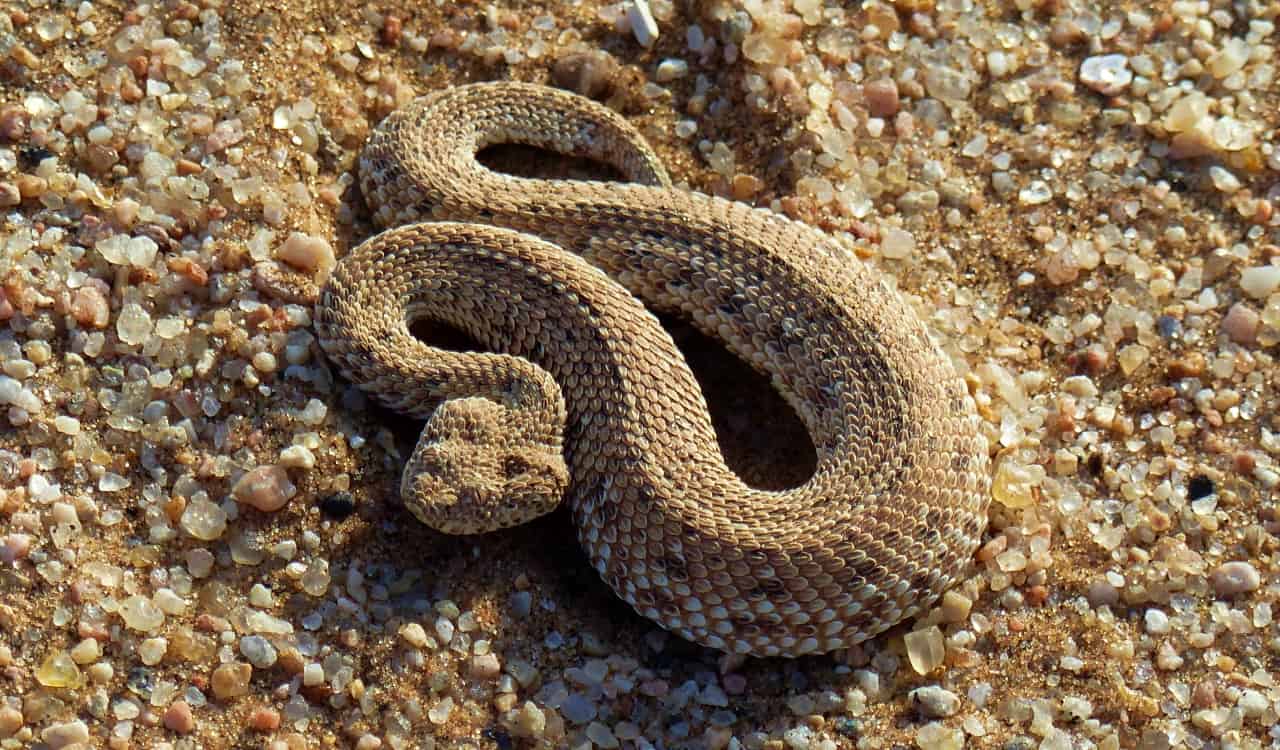
Death Adder: The Fastest Striking Snake In Australia
- Venom: Neurotoxin
- Its Potency: 0.4 to 0.5mg
- Average Fatality Rate Annually: Deaths Are Rare
As the name suggests, the Death Adder is one of the most venomous snakes on the planet…yet they do not kill as often as one might assume. You’ll mostly find them in Australia & New Guinea. It stands out a lot due to how aggressive the snake can be at times, as well as its incredibly fast strike. In fact, it has the fastest strike among all Australian snakes. Their body is actually full-muscle, which aids its strike speed. This is likely why it was given such a scary name.
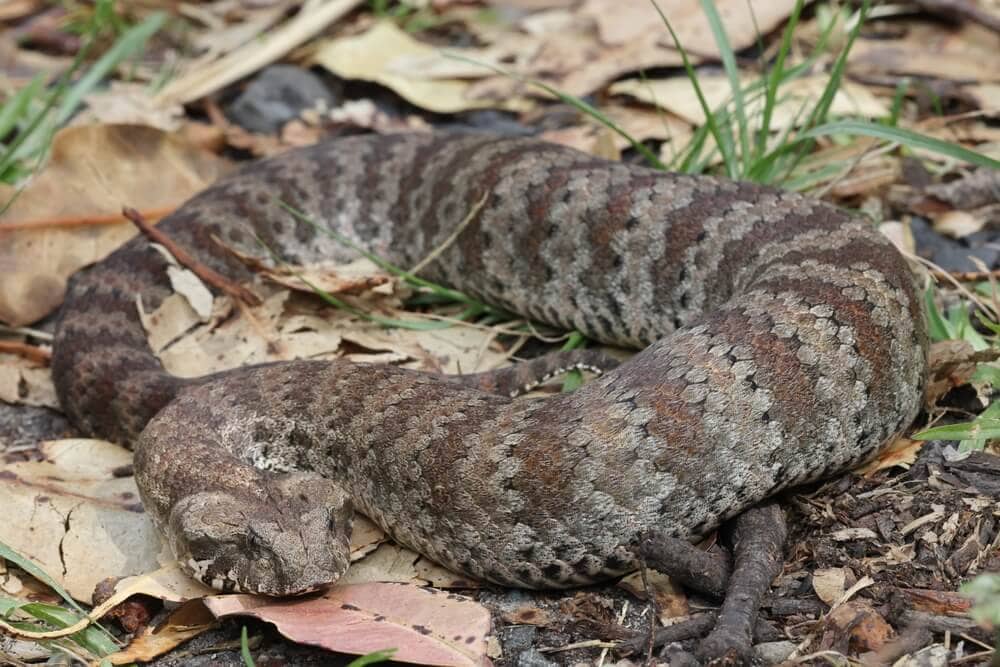
They can sink in a powerful Neurotoxin up to 100mg per strike. To hit at a rapid speed is one thing, but being able to deliver up to that much? Imagine if they held on, right? Now, keep in mind that there is an antivenom so deaths from the Adder aren’t common nowadays. However, if you’re bitten by one, it can take just 6 hours for a healthy adult to die from their venom. That is pretty fast-acting and a clear medical emergency.
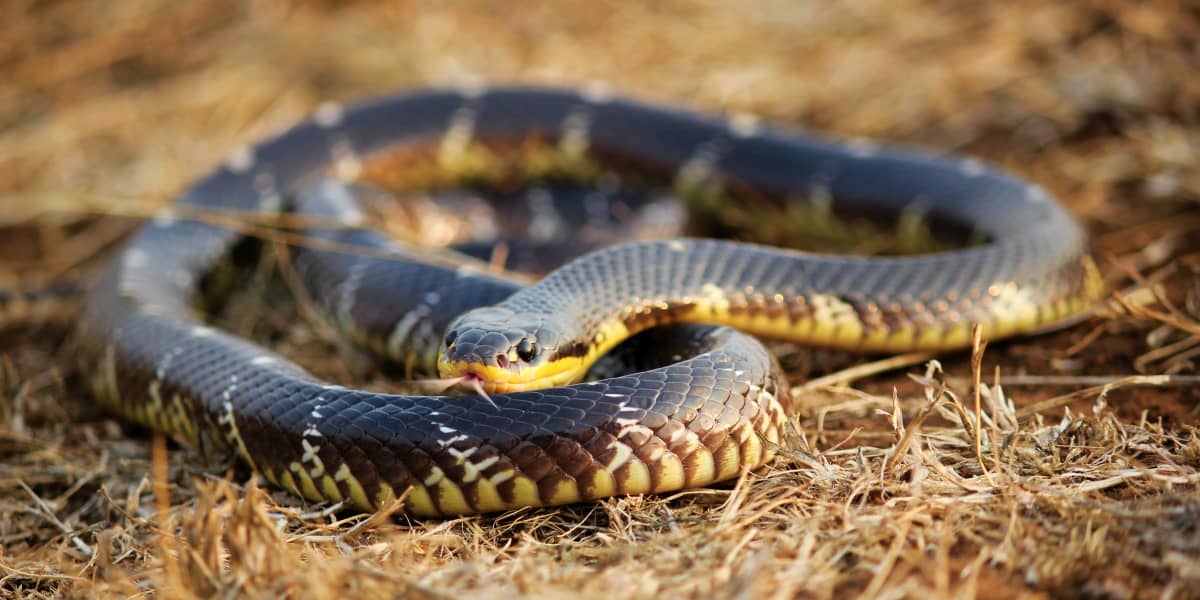
Common Krait: Possesses A Soft Bite That Offers False Reassurance
- Venom: Various Neurotoxins
- Its Potency: 0.089mg
- Average Fatality Rate Annually: 10 Or Less
The Common Krait snake is certainly one of the most venomous snakes known to mankind. At night, this snake will come out hissing loudly, prepared to hunt. They strike pretty fast and happen to be responsible for the second-most snake bites in India currently. They also account for more than half the deaths due to snake bites in Bangladesh annually too. What makes the Common Krait stand apart from other snakes is that other venomous snakes will strike and their bite will provide a lot of pain.
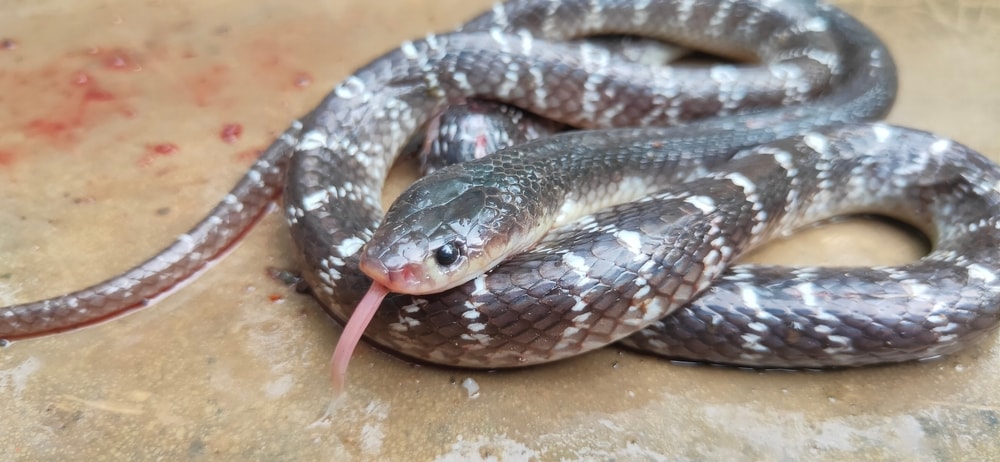
Yet this is not so with the Common Krait. That is likely due to their low yield, as they only inject about 10mg per bite on average. This is kind of a small snake, of course. Their bite hurts less due to the smaller material but this is all false reassurance, as their venom can take hold and kill in less than 24 hours. Therefore, one should never assume that a Krait bite wasn’t a big deal. It always is!

Western Tiger Snake: The Stripes Of A Tiger With The Fangs Of A Snake
- Venom: Neurotoxin, Myotoxin, Coagulants, Haemolysins
- Its Potency: 0.06mg
- Average Fatality Rate Annually: Only 4 Deaths From 2005 to 2015 Recorded Numbers (at least 1 death yearly)
The Western Tiger Snake is just one of the MANY Tiger Snakes that can be found in Australia and all the islands close to them, such as Tasmania. Unlike a banded snake that will usually have scales that look almost like plastic, Tiger Snakes will have rough skin. On top of this, you’ll see larger stripes compared to the smaller bands. Keep in mind that these are some of the most venomous snakes on the planet, but the Western Tiger Snake seems to be the most common culprit here.
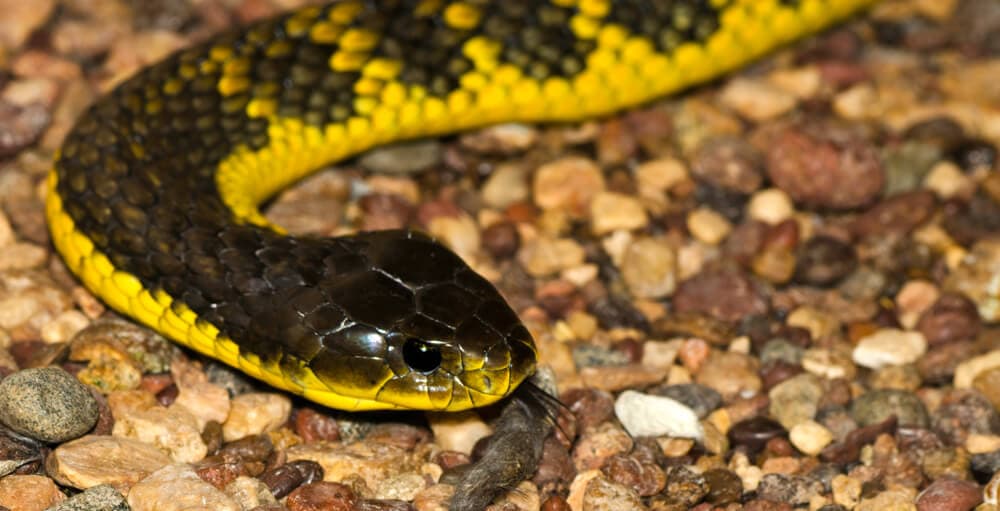
Tiger snakes used to be one of the top snakebite killers in Australia before the antivenom was introduced. Keep in mind, a version of this snake has been around for millions of years. The venom inside the Western Tiger Snake or any Tiger Snake has been so good, it has not needed to change in 10 million years. If that is not an effective reason to not evolve very much, we do not know what is!
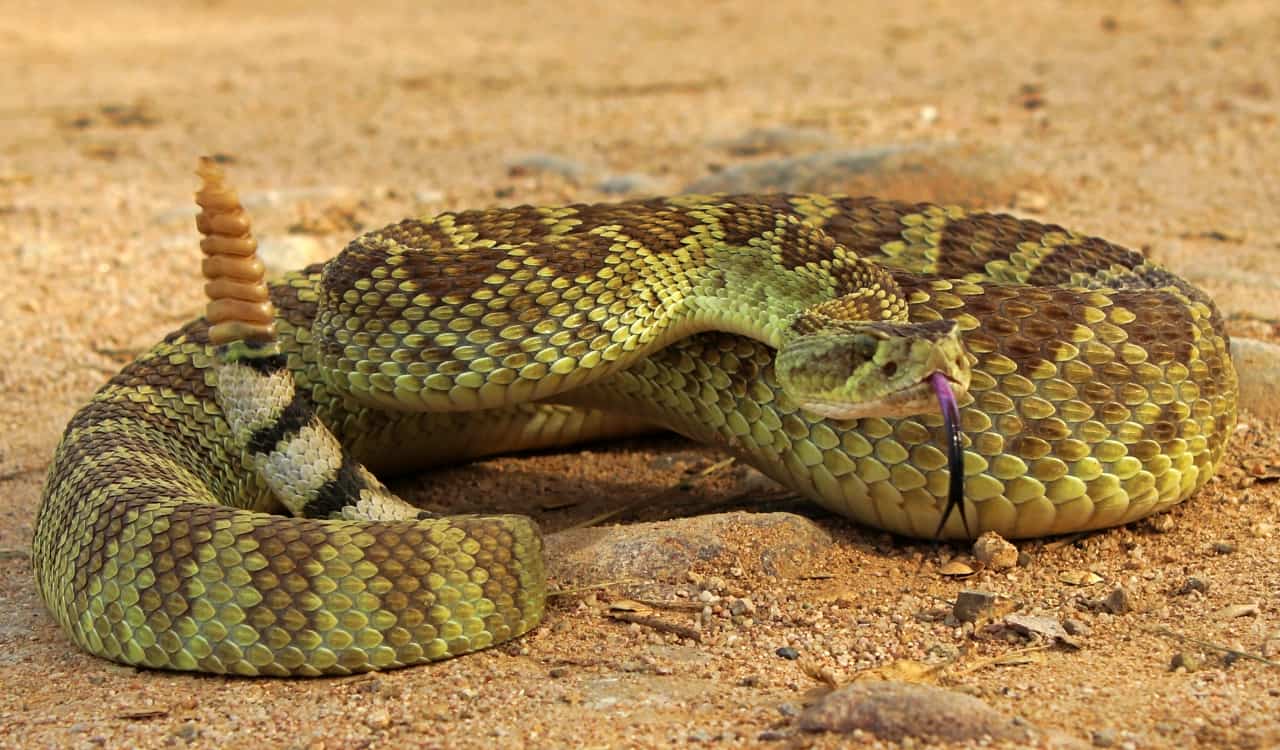
Mojave Rattlesnake: The Most Venomous Rattlesnake On The Planet
- Venom: Neurotoxin, Hemotoxin
- Its Potency: 0.23mg
- Average Fatality Rate Annually: Death Is Rare Due To Antivenom
The Mojave Rattlesnake is not just one of the most venomous snakes on the planet, it is THE most venomous rattlesnake. It possesses an incredibly deadly Neurotoxic-Hemotoxin. This will paralysis people in most areas of the body slowly over the span of an hour or two. You’ll then discover you can barely breathe if you can at all. You’ll also begin to bleed from random areas of your body, as now you’re unable to clot. Then your blood coagulates, turning solid. Now organs stop getting blood.
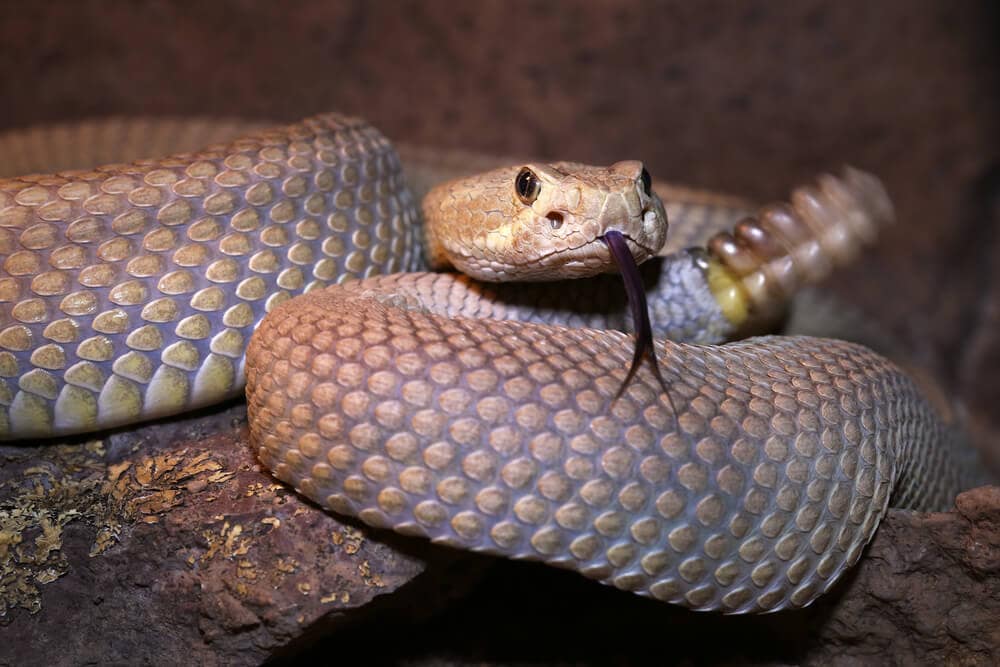
That happens pretty much all over, so you can see how this snake is worth fearing. The Mojave Rattlesnake is famously found mostly in the United States & Mexico. While Timber Rattlesnakes bite more people in the United States than any other snake on record, the Mojave seems to be the most effective killer when it attacks humans. However, deaths are now pretty rare due to the antivenom and the fact that most Americans can get to an emergency room quickly or carry antivenoms.
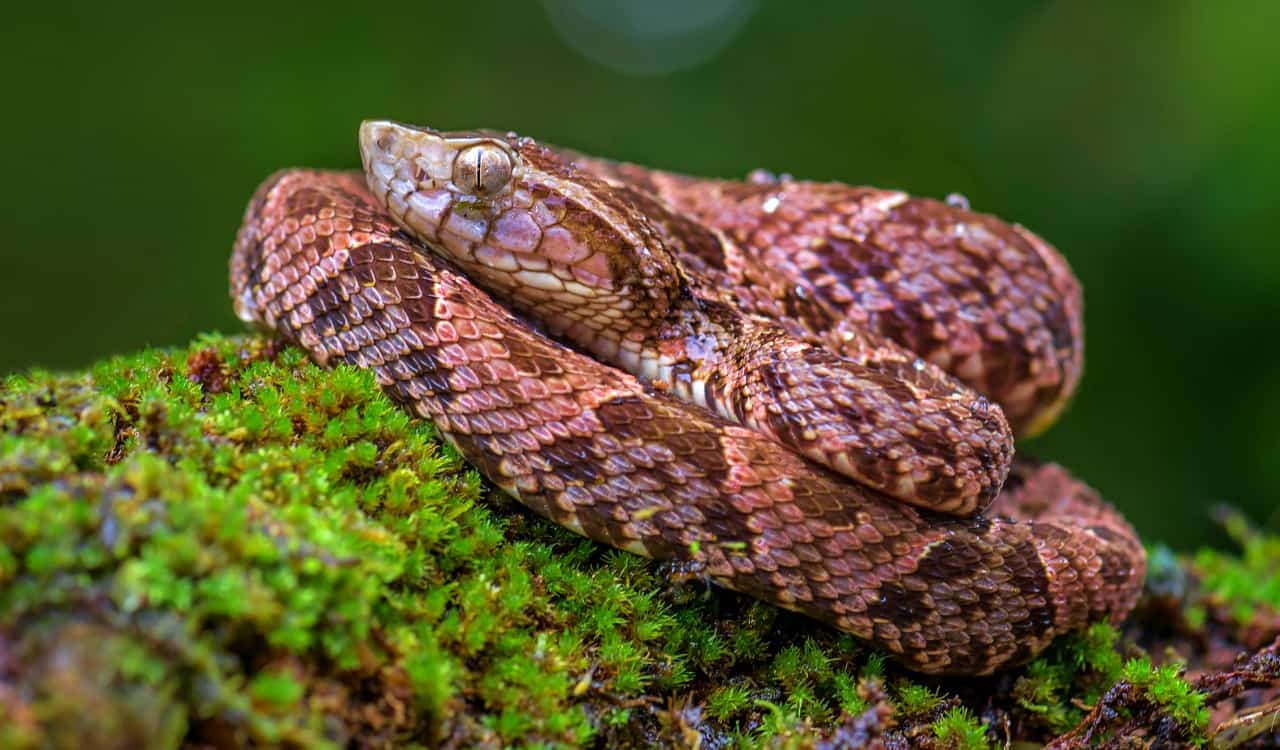
Fer-De-Lance: The Costa Rican Nightmare
- Venom: Hemotoxin, Necrotoxin
- Its Potency: 2.84mg
- Average Fatality Rate Annually: Deaths Now Rare
The Fer-De-Lance is one of the most dangerous snakes on the planet, and one of the most common bitters. For some reason, this snake tends to end up around human beings and thus, strikes due to being skittish. It is a very defensive animal, and when it feels threatened, the Fer-De-Lance will strike with reckless abandon. They like to get in the common “S-Shape” coil before striking, allowing most people to know when to back up.
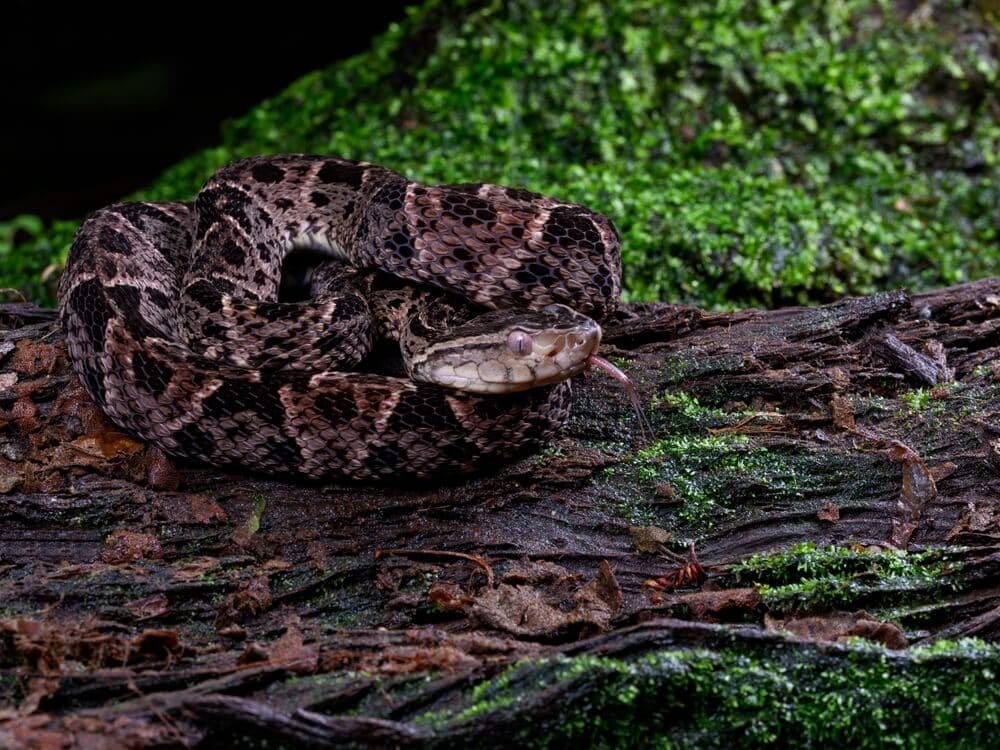
You’ll find them all over the lower section of Mexico and sporadic parts of South America. Currently, they are the most common snakebite in Yucatan, Mexico. In Costa Rica, the Fer-De-Lance is responsible for 46% of all bites and 30% of all hospitalized cases. Meanwhile, in Columbia, it has caused up to 70% of snakebites annually. Ultimately, the antivenom today results in far less death when bitten by one of these incredibly venomous snakes. The death rate used to be incredibly high.
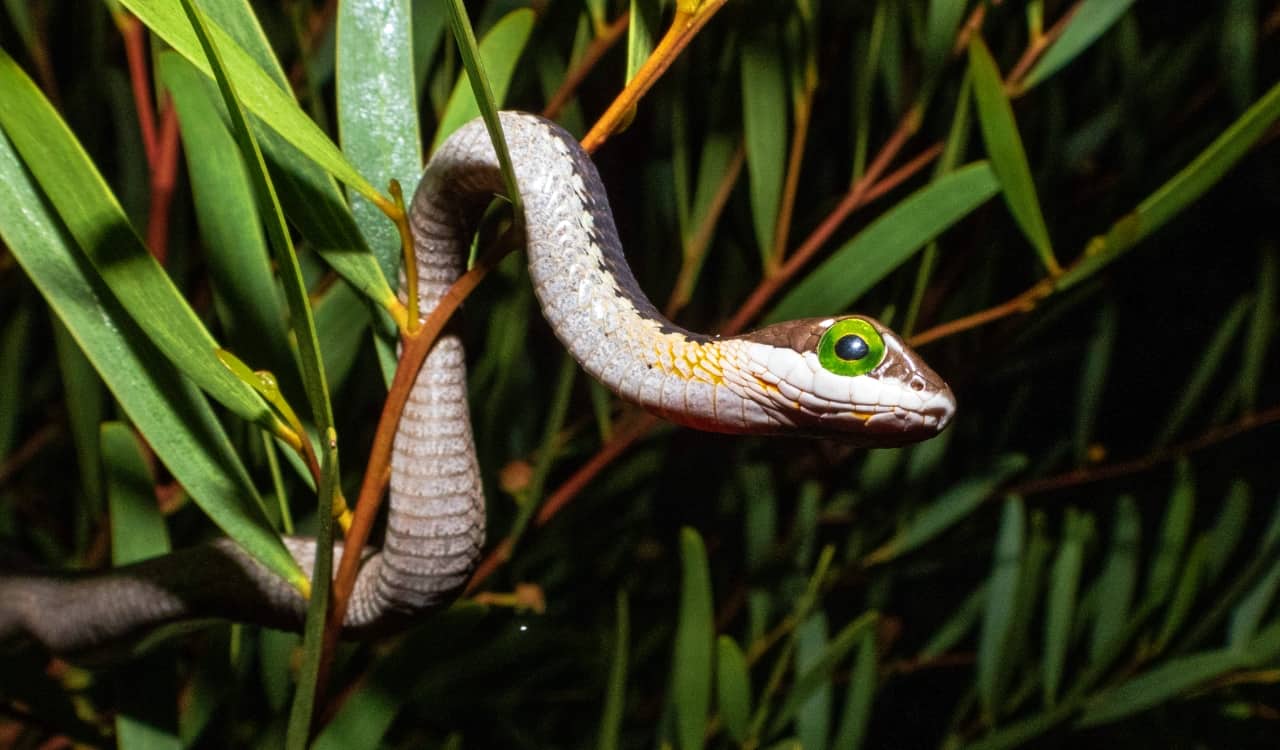
Boomslang: The Mouth Of Africa’s South
- Venom: Hemotoxin
- Its Potency: 0.071mg
- Average Fatality Rate Annually: Only 2 Fatalities since 1919
South Africa’s Boomslang went unsung for years but has now been given the respect it deserves. You’ll mainly see them hanging out in trees, as their green coloring will often act as perfect camo from predators. Their venom is pretty powerful if they actually do strike. It is a sickening version of Hemotoxin that can kill humans within 24 hours. This snake is also known for having one of the widest mouth openings when it bites. We’re talking 170-degrees in a relatively small snake, people!
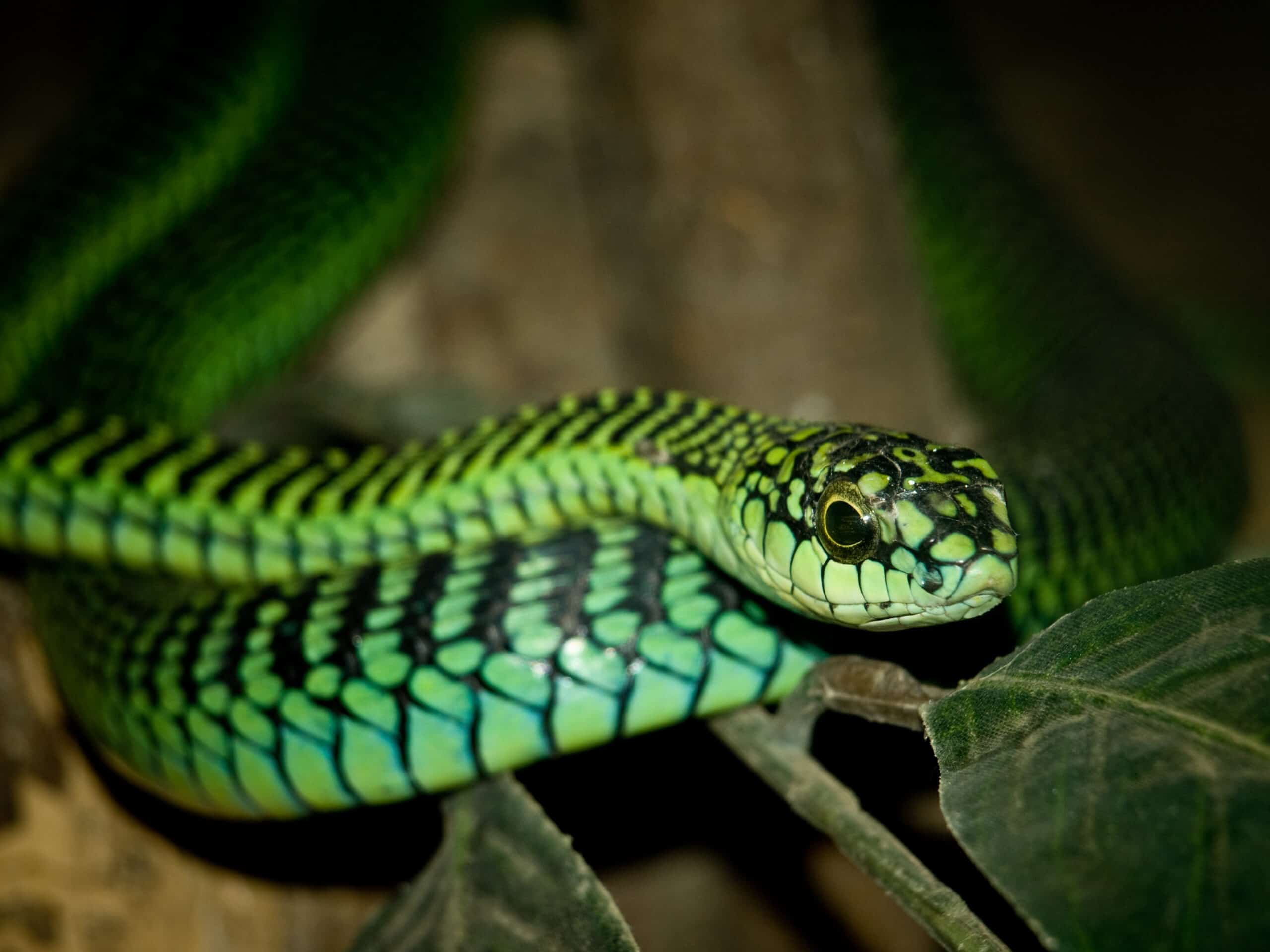
That means they’ll bite hard and will sink their teeth in pretty deep. The snake’s antivenom, thus far, can only be found in one hospital located in Johannesburg, South Africa. Therefore, you’ll need to get to this hospital within 12 to 24 hours or the snake’s Hemotoxin will surely kill. While the antivenom was invented in the 1940s for the Boomslang, it seems that no one else has needed Boomslang antivenom causing just one place to have it.
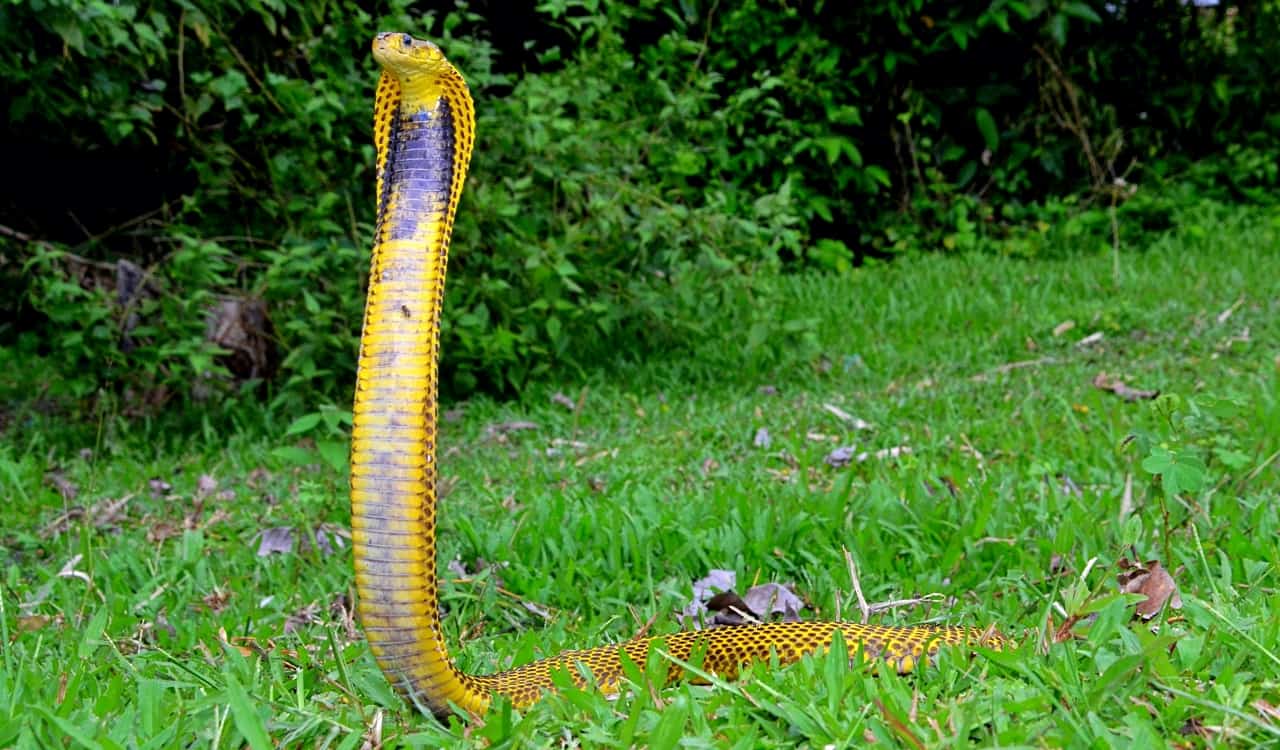
Samar Cobra: Watch Out, They Spit
- Venom: Neurotoxin, Cytotoxin, Necrotoxin
- Its Potency: Not Available
- Average Fatality Rate Annually: Very Few Due To Widespread Antivenom
The Samar Cobra is quite a pretty snake. Yet it’s one of the most venomous snakes known to mankind. It possesses a Neurotoxin mixed with Cytotoxic properties. This includes Necrotoxic materials too. They will bite people who get too close and make them fear for their life. However, they’ll also try their best defensively to get people away from them by spitting their venom too. They do not technically go for the eyes of humans, as they just spit in the general direction.
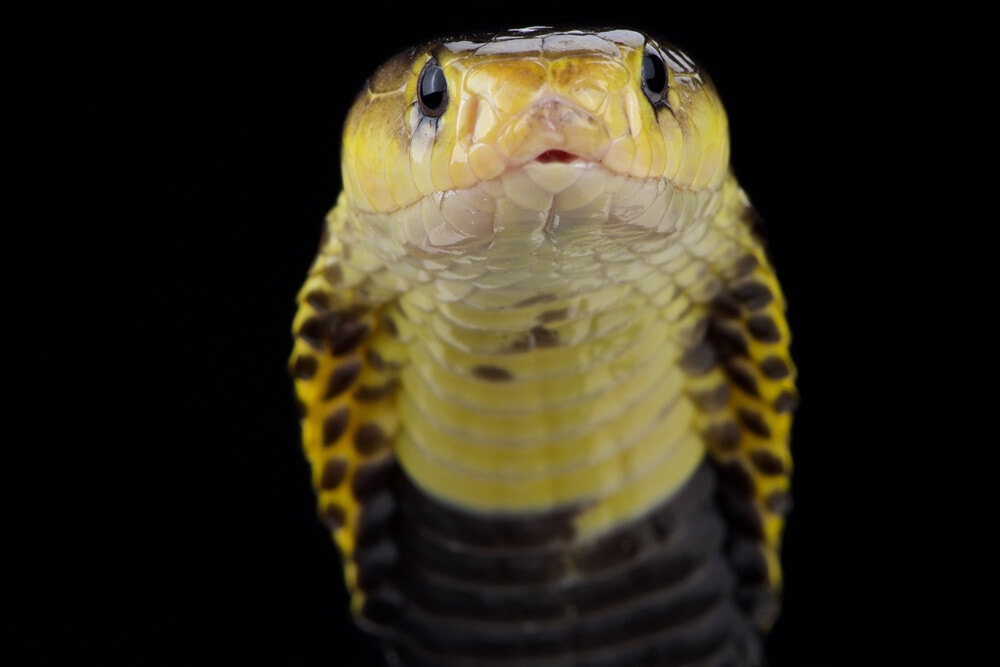
However, they have hit some in the eyes beforehand, causing severe pain. Their venom WILL damage your eyes if it lands, and it could even do damage to you internally if it lands on your skin and goes into an open cut or wound. Regarding the eyes, the Samar Cobra has permanently blinded many people. Yet the venom itself can kill and even result in the loss of some limbs due to the necrosis it causes.
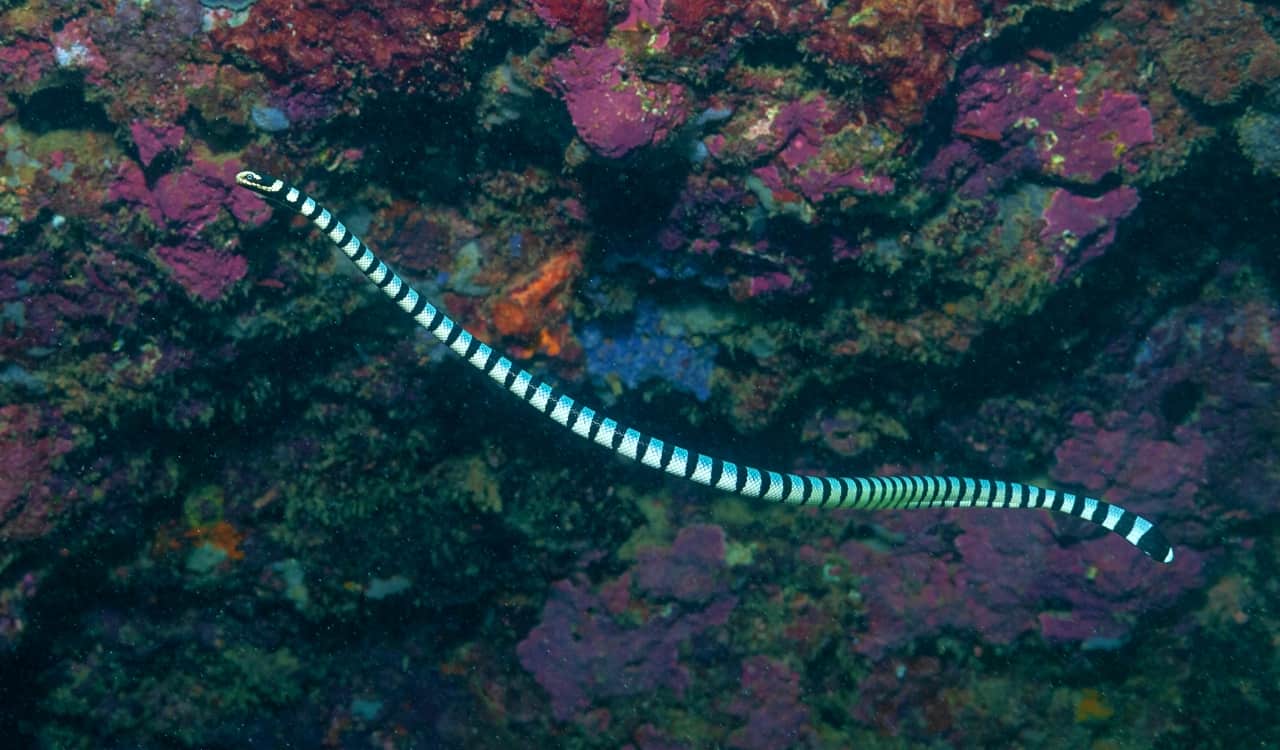
Banded-Krait: Don’t Make It Angry, You Wouldn’t Like It When It’s Angry
- Venom: Neurotoxin
- Its Potency: 1.289mg
- Average Fatality Rate Annually: Incredibly Rare (very little human interaction)
The Banded-Krait is known to be a relatively shy snake that generally only bites when antagonized or as a defense. Thus, deaths from them are pretty low. However, they are one of the most venomous snakes on the planet and well-known for it. They stand out very clearly due to how they appear, so most people rarely go after them. Even if they did, most can escape pretty fast before humans catch up. It is clear that if they wanted to, the Banded-Krait could bite far more often.
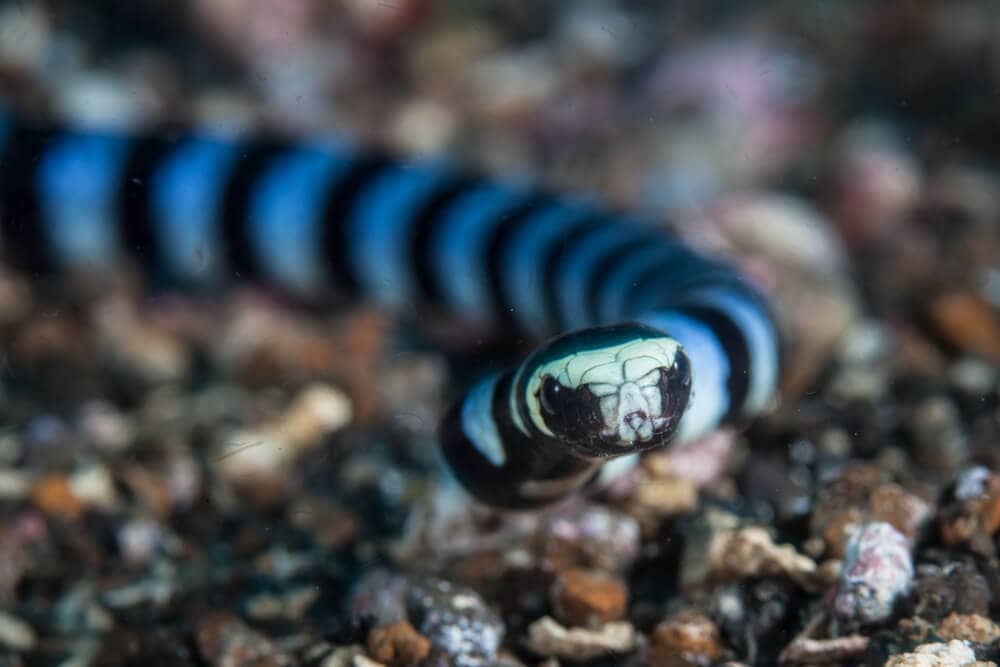
Like most of the top venomous snakes on the planet, the Banded-Krait is mostly found in Asia. Specifically, India & Indonesia. It is also known for being in numerous environments throughout these areas. Most will be where other small creatures happen to be, so lower environments are typical. Yet some have gone up to even higher ground for food, causing the Banded-Krait snakes to be found as high as 5,000 feet above sea level.
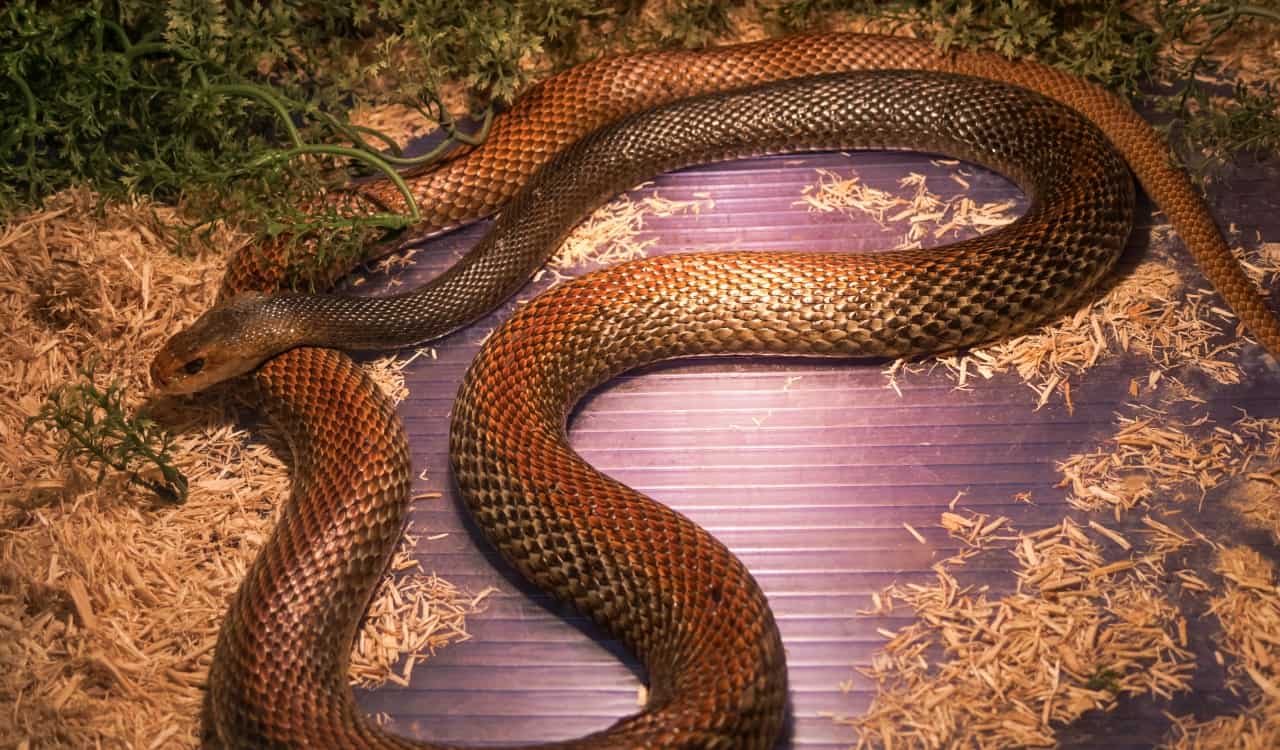
Coastal Taipan: Third-Most Venomous Snake Overall
- Venom: Taicatoxin, Neurotoxin
- Its Potency: 0.106mg
- Average Fatality Rate Annually: Deaths Rare (yet all untreated bites have a 100% mortality rate)
The Coastal Taipan seems to know how powerful their venom is, and they are happy to use it. It almost comes off that they get some sick pleasure out of killing anyone they see fit to die on a particular day. The way to know the Coastal Taipan is preparing to strike at you is that it’ll freeze up, then lunge itself forward like a spring. While doing this with prey, they strike quickly multiple times. It operates in a similar way with humans, as it will defensively lunge and attack.
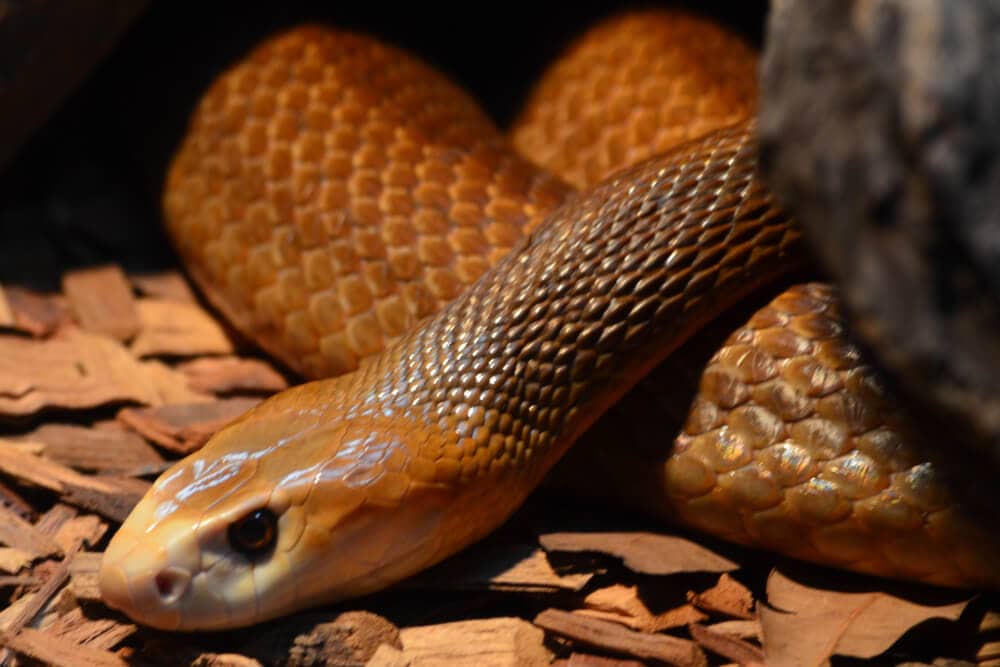
On top of this, as one of the most venomous snakes on the planet, the Coastal Taipan does not take anything off of its venom when it bites defensively or offensively. They deliver a deadly dose every single time. This is why untreated Coastal Taipan bites have a 100% mortality rate. However, humans rarely come across them as they’re generally located in the Australian & New Guinea regions nearest to the coastlines. Hence “Coastal” Taipan snake.
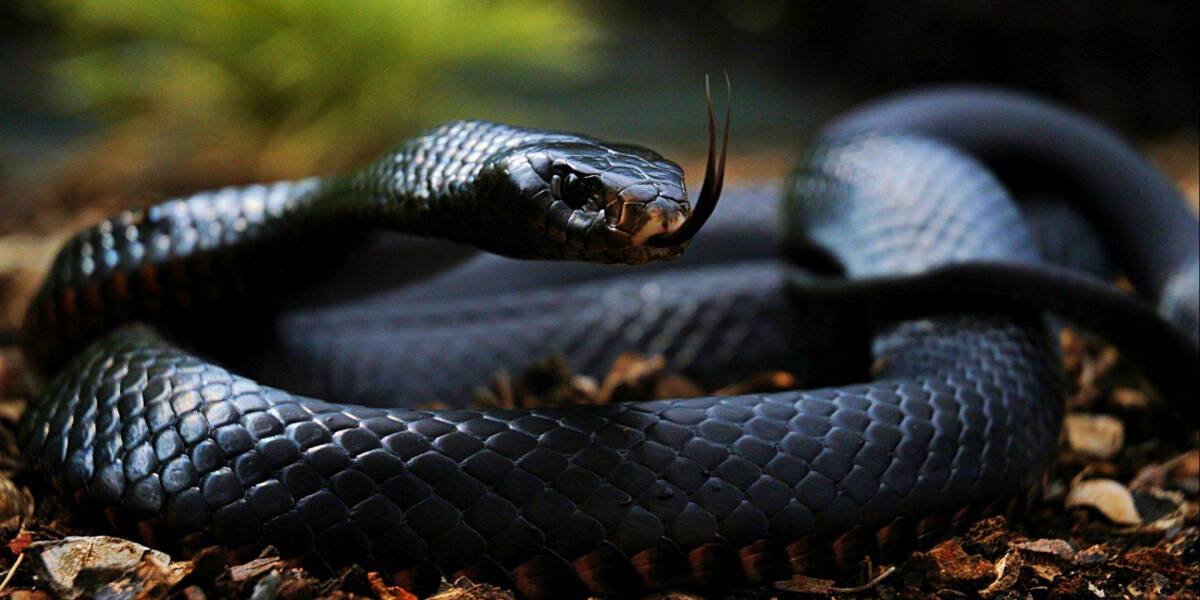
Black Mamba: The Kobe Bryant Of Snakes
- Venom: Neurotoxin
- Its Potency: 0.32 to 0.33mg
- Average Fatality Rate Annually: Death Is Rare (long-term side effects are common, however)
Black Mambas are some of the most unpredictable snakes on the planet. You never know how they are going to react, making it almost impossible to know what to do around one. They are very territorial and will often bite to defend themselves, yet they’re also known for slithering away quickly from predators. Known for being incredibly quick and agile, they’re able to bite several times.
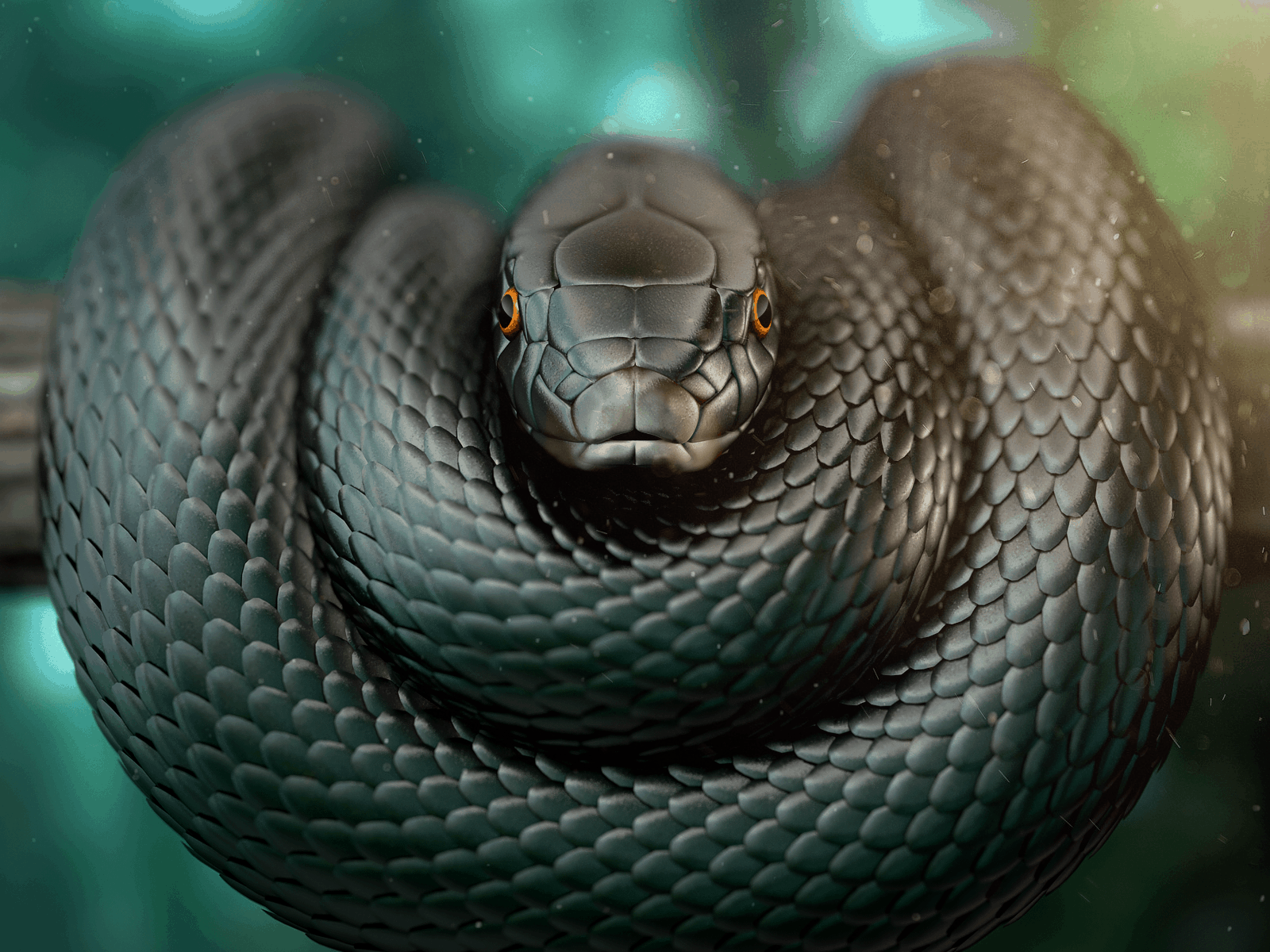
These strikes will also come in rapid succession. In fact, you could be bitten a few times before you even register that one occurred. This makes them incredibly dangerous alone. Add in that they are also one of the most venomous snakes on the planet, and you have a recipe for disaster written all over this snake. If you see one, do yourself a big favor and back away slowly then once clear…run away as fast as you can!
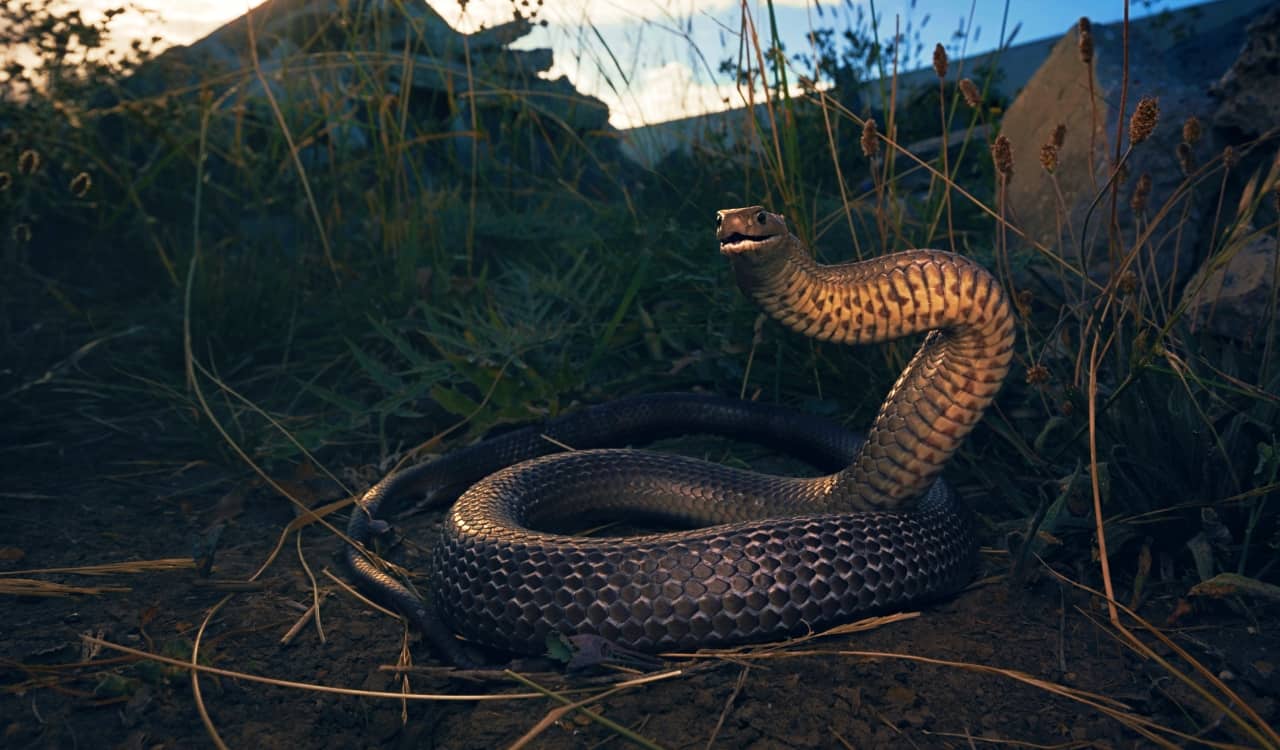
Eastern Brown: Second-Most Venomous Land Snake On The Planet
- Venom: Neurotoxin, Hemotoxin, Myotoxin
- Its Potency: 5.0 mg
- Average Fatality Rate Annually: At Least A Few Deaths Per Year
The Eastern Brown Snake is responsible for at least 60% of all snakebites in Australia, with several of them being fatal. This is not just one of the most venomous snakes on the planet, it’s the second-most venomous land snake overall. Yet people do not fear it as much as others as it’s pretty solitary. Males tend to separate from females and younglings of the species really early on. Eastern Browns are deadbeat dads basically, they love that alone time a bit too much.
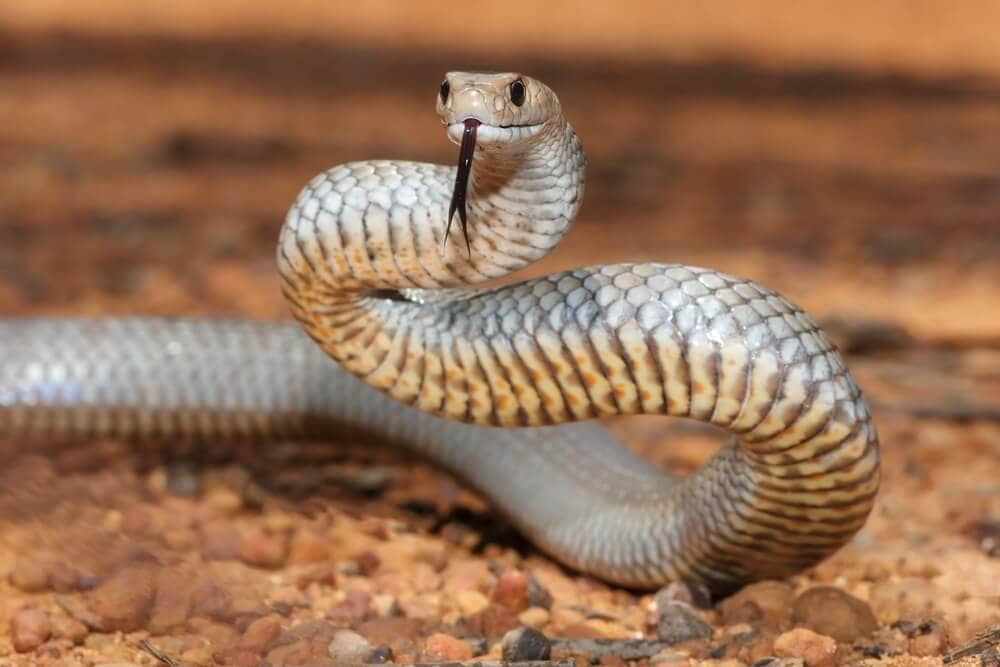
Their venom is incredibly dangerous and a mix of three different venoms, which are deadly individually. This is likely why death from an Eastern Brown Snake can happen in just 30 minutes even for a healthy person. In fact, the venom starts to affect you in only 15 minutes with 30 minutes being the time things start to shut down. The max time you can wait for antivenom is around 1 hour. If you do not have it by then, well, say hi to Uncle Bob for us!

Coral Snake: America’s Deadliest Snake
- Venom: Neurotoxin
- Its Potency: 1.0mg
- Average Fatalities Annually: Deaths Are Rare Nowadays
Coral Snakes are one of the most venomous snakes on the planet. Many Americans often mistake them for other species like the Milk Snake, Pipe Snake, or King Snake. The way to know the difference truly is to keep an eye on their pattern. “Red & Yellow will kill a fellow,” they say. This snake packs a punch with its powerful Neurotoxin. Enough to kill in less than a few hours if not treated. Of course, America does have an antivenom for it but Coral Snakebites.
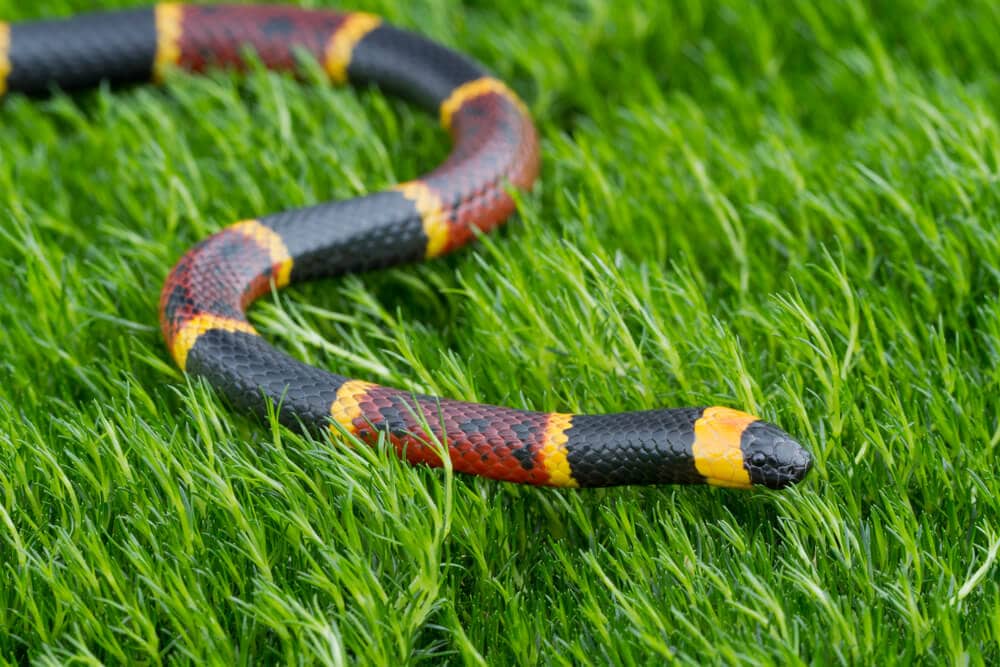
Bites from the Coral Snake are relatively rare throughout the country (although they mostly populate the southern region). The way to avoid any Coral snake is ultimately by wearing tough clothing in areas that they will usually be. This could be a leather jacket with strong hiking boots. This is due to their fangs being pretty small, thus much easier to deal with by wearing clothing that they cannot penetrate.

Dubois’ Sea Snake: The Most Venomous Sea Snake On The Planet
- Venom: Neurotoxin
- Its Potency: 0.036 to 0.044mg
- Average Fatality Rate Annually: Death Is Rare (due to mostly dry bites)
You’ll often spot the Dubois’ Sea Snake hanging out in Coral Reefs or any reef area normally, putting them in constant contact with humans. Since this sea snake wants the best of both worlds like humans, interactions are bound to happen. Usually, they tend to bite humans as a warning with generally 90% of those strikes being dry bites. This is a bite with no venom released in it. Yet they can and have sunk their teeth in harder and delivered a deadly dose of venom.
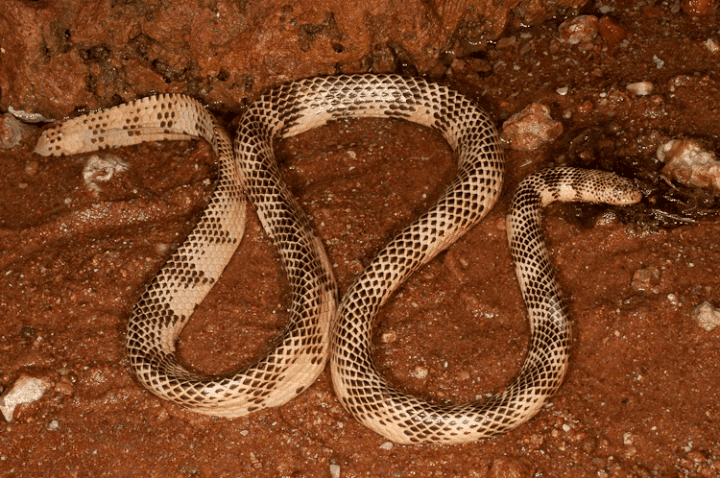
If it ever happens to you…you’ll feel a deadly neurotoxin kick in quickly. Symptoms can start in as little as 30 minutes but the average death rate tends to happen around the 4 to 8 hour period. If you seek help before then, you’ll likely be fine. The antivenom for this snake is said to be pretty good. Especially for one of the top three most venomous snakes on the planet!

King Cobra: The Iconic Killer
- Venom: Neurotoxin
- Its Potency: 1.28mg
- Average Fatality Rate Annually: Death Total Less Than 5 Per Year
King Cobras are some of the most famous snakes, connected to history and mythology. Native to Africa and Asia, King Cobras are known for being one of the most venomous snakes on the planet with most dying from their bite or having permanent damage. Their venom is part of the Neurotoxin family and has been utilized for hundreds of years as a notable poison. Of course, one of the King Cobras’ biggest claims to fame is its growling hiss.
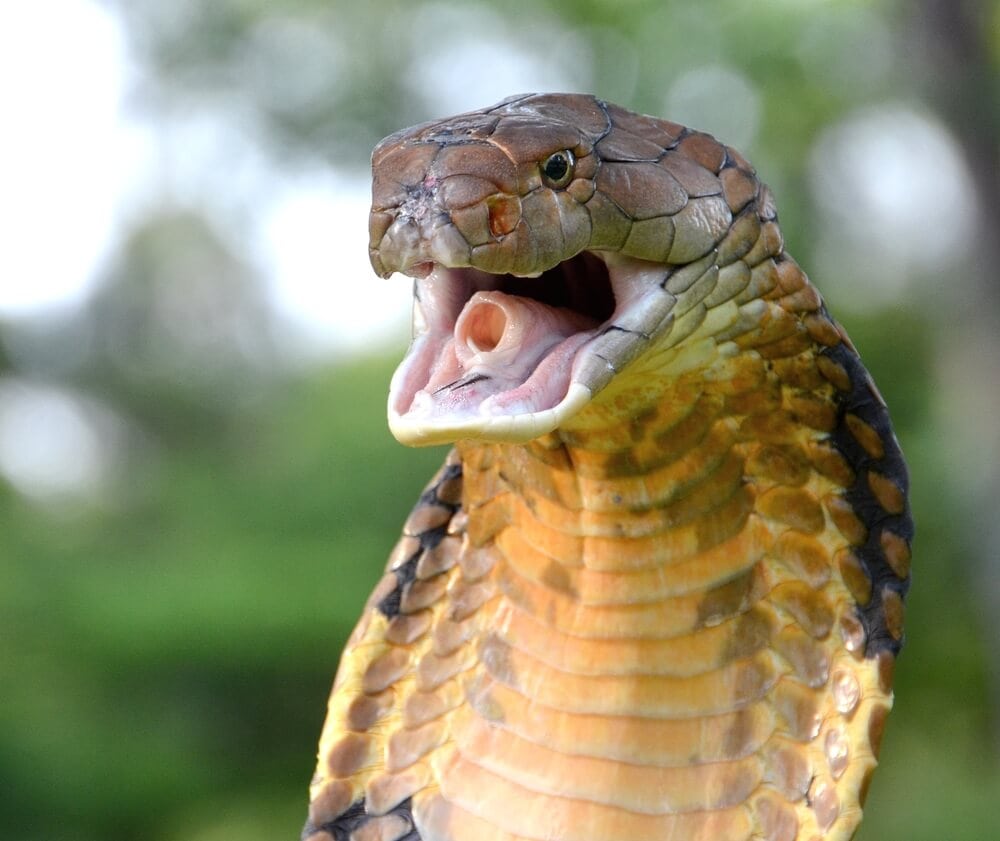
This is unique to the King Cobra and can be one of the most frightening things one can ever experience. The Cobra has several interactions with humans simply due to enjoying many human environments. You might see them right outside your home, inside random pyramids and caves, or simply wrapped up in a wheel under your car. Seriously, all of those have happened with this snake. Overall, it might be good to be the King but deaths from this Cobra are rare these days.
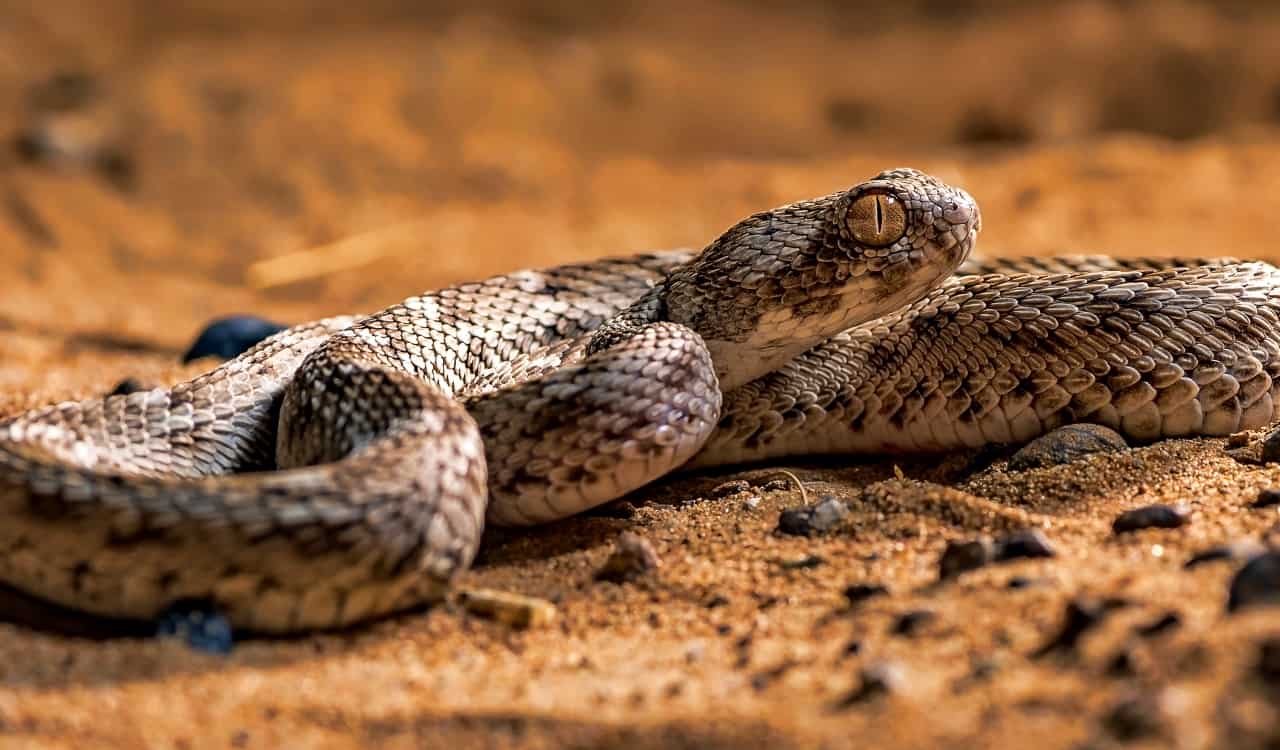
Saw-Scaled Viper: Responsible For The Most Snakebites Annually
- Venom: Cytotoxin, Cardiotoxin, Hemotoxin, and Neurotoxin
- Its Potency: 2.3mg
- Average Fatality Rate Annually: Roughly 40,000
When we say the Saw-Scaled Viper is a snake to fear, we mean it. They do not mind striking at humans or anything that moves honestly. They happen to be responsible for the most snakebites of any other snake per year. A title they have held down for several years now. This is mostly due to how widespread the species is these days.
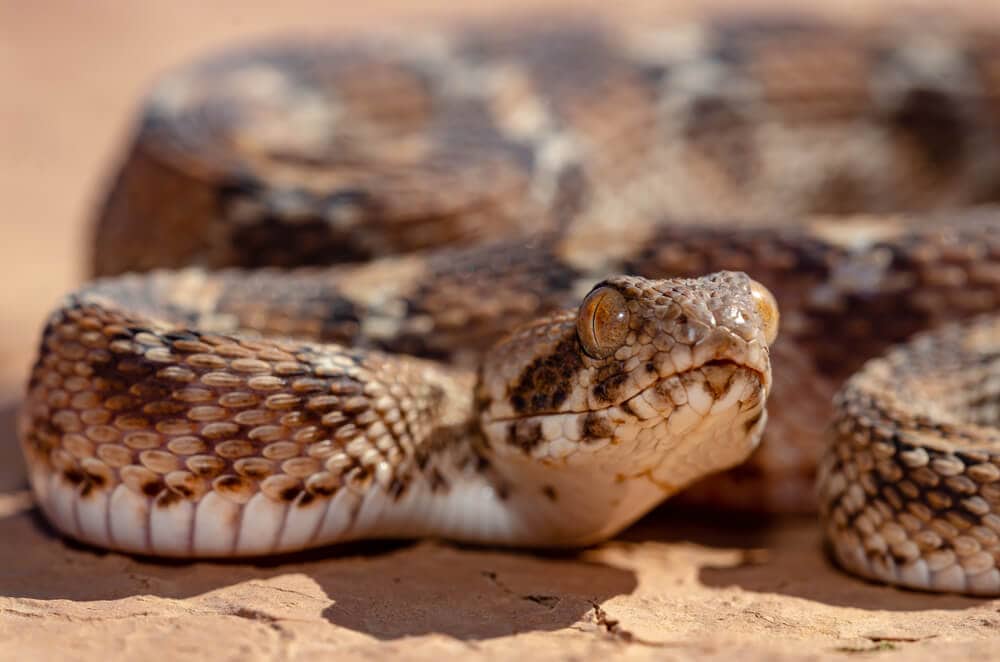
As a result of being the most common bitter, they also average out the most fatalities of any other snake. There are between 150,000 to 200,000 snakebite fatalities in a given year on average. This comes from several million bites and envenomings overall. The Saw-Scaled Viper is responsible for anywhere between 40,000 to 60,000 of those. They do have a deadly venom that takes about 8 to 12 hours to kill someone. The death rate might seem like it’d be pretty low, but they kill a lot too!
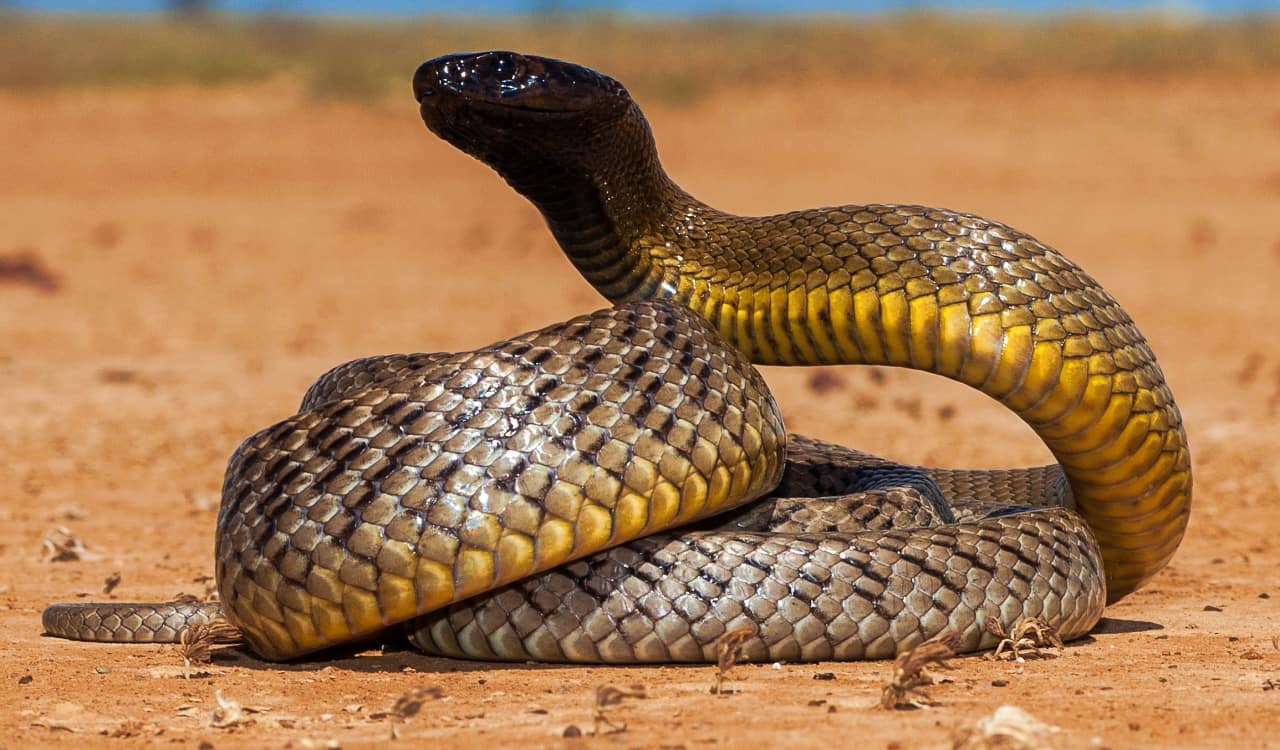
Inland Taipan: The Most Venomous Snake On The Planet
- Venom: Neurotoxin, Paradoxin, Oxytoxin, Hemotoxin, Myotoxin, & Hyaluronidase Enzymes
- Its Potency: Not Fully Tested Or Understood
- Average Fatality Rate Annually: Very Few Deaths Due To How Remote They Are
When only one bite is lethal enough to kill up to 100 full-grown, healthy men…one could say that your venom is strong. Yet the Inland Taipan does not use up everything with one strike, as they have a great recovery period. This allows them to strike several times and land major doses of venom each and every single time. The venom they have in just one strike can kill a healthy adult in as little as 5 minutes, with most people dying in less than 1 hour of being bitten.
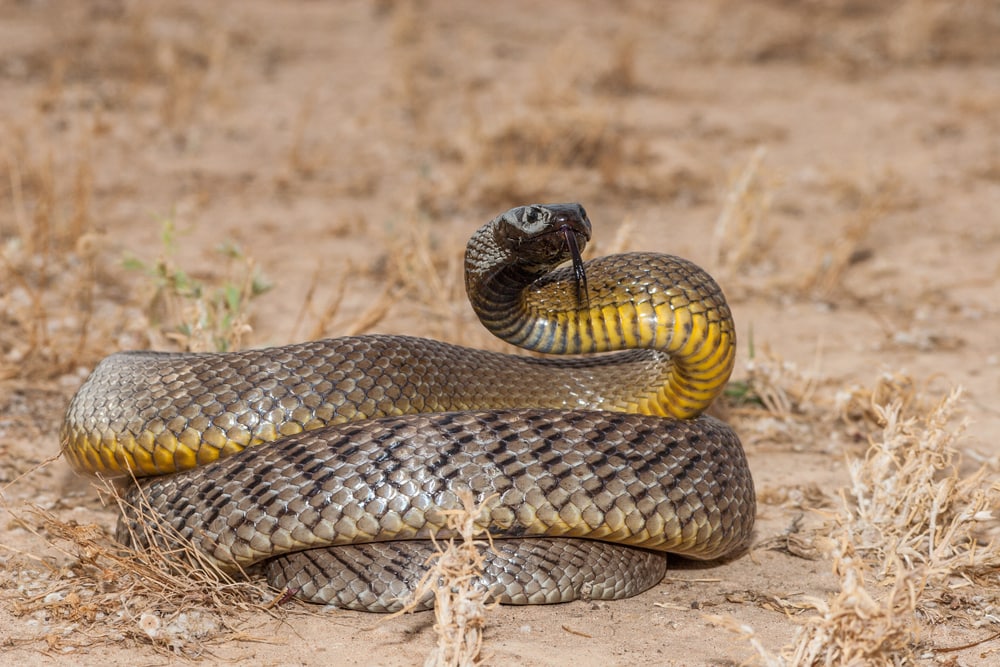
The venom itself is filled with Neurotoxin, Paradoxin, Oxytoxin, Hemotoxin, & Myotoxin. However, the big aid is the Hyaluronidase Enzymes. This helps the venom absorb faster into the body. Thereby allowing it to hit fast and hard. There is a possibility of Nephrotoxins and Haemorrhagins in this venom as well. Overall, it is so powerful that even science has not completely figured it all out. The venom is so strong, it can use a third of the Eastern Brown’s venom yield and kill more.

